

















The Dreamers: The Quijotes of San Antonio
By Carlos R. Orozco, MDLegacy and iROK: The evolving trends of international opthalmology partnerships of local military teams
 By
By
Tim Soeken, MD, Darrel Carlton, MD, Matt Caldwell, MD 16
Stork One: Transporting the Littlest Texans
By Rachael Farner, MSN, RN, CCRN, C-NPT, C-ONQS
Shared Beat: Guatemala Medical Outreach Programs By F. Wright Hartsell, MD
Therapy Animals Connect Locally and Across Texas By Linda Porter-Wenzlaff, PhD, LPC-S, NCC, MSN, RN
San Antonio Medicine is the official publication of Bexar County Medical Society (BCMS). All expressions of opinions and statements of supposed facts are published on the authority of the writer, and cannot be regarded as expressing the views of BCMS. Advertisements do not imply sponsorship of or endorsement by BCMS
EditoriAl CorrESpondEnCE: Bexar County Medical Society 4334 n loop 1604 W, Ste. 200 San Antonio, tX 78249
Email: editor@bcms.org
MAGAZinE AddrESS CHAnGES: Call (210) 301-4391 or Email: membership@bcms.org
SuBSCription rAtES: $30 per year or $4 per individual issue
AdvErtiSinG CorrESpondEnCE: louis doucette, president traveling Blender, llC.
A publication Management Firm 10036 Saxet, Boerne, tX 78006 www.travelingblender.com
For advertising rates and information Call (210) 410-0014
Stop, Drop and Mole: Skin Cancer Prevention with SAFD By Primary Authors: Fatma Zeynep Deligonul and Desiree E. Ojo; Contributing Author: Rachelle Hamblin, MD, MPH
Disease Reporting and Why It Is Necessary By Rita Espinoza, DrPH, Chief of Epidemiology, Christina Carmona, MPH, CHES, Epidemiology Program Manager, and Miguel Cervantes, MPH, Public Health Administrator, Communicable Disease Division
Ronald McDonald House Charities of San Antonio: Keeping Families Close By Travis Pearson, CEO, Ronald McDonald House
News: First Tuesdays at the Capitol Continue By Mary Newsom, BCMS CEO and ED
Lexus LS500 By Stephen Schutz,
PuBLiSHED By: traveling Blender, llC. 10036 Saxet Boerne, tX 78006
PuBLiSHER louis doucette louis@travelingblender.com
BuSinESS MAnAGER: vicki Schroder vicki@travelingblender.com
ADvERTiSinG SALES:

AuSTin: Sandy Weatherford sandy@travelingblender.com
SAn AnTOniO: Gerry lair gerrylair@yahoo.com
For more information on advertising in San Antonio Medicine, Call Traveling Blender at 210.410.0014 in San Antonio and 512.385.4663 in Austin.
Email: louis@travelingblender.com
SAN ANTONIO MEDICINE is published by SmithPrint, Inc. (Publisher) on behalf of the Bexar County Medical Society (BCMS). Reproduction in any manner in whole or part is prohibited without the express written consent of Bexar County Medical Society. Material contained herein does not necessarily reflect the opinion of BCMS, its members, or its staff. SAN ANTONIO MEDICINE the Publisher and BCMS reserves the right to edit all material for clarity and space and assumes no responsibility for accuracy, errors or omissions. San Antonio Medicine does not knowingly accept false or misleading advertisements or editorial nor does the Publisher or BCMS assume responsibility should such advertising or editorial appear. Articles and photos are welcome and may be submitted to our office to be used subject to the discretion and review of the Publisher and BCMS. All real estate advertising is subject to the Federal Fair Housing Act of 1968, which makes it illegal to advertise “any preference limitation or discrimination based on race, color, religion, sex, handicap, familial status or national orgin, or an intention to make such preference limitation or discrimination.
SmithPrint, Inc. is a family-owned and operated San Antonio-based printing and publishing company that has been in business since 1995. We are specialists in turn-key operations and offer our clients a wide variety of capabilities to ensure their projects are printed and delivered on schedule while consistently exceeding their quality expectations. We bring this work ethic and commitment to customers along with our personal service and attention to our clients’ printing and marketing needs to San Antonio Medicine magazine with each issue.
Copyright © 2023 Smithprint, inc. prin

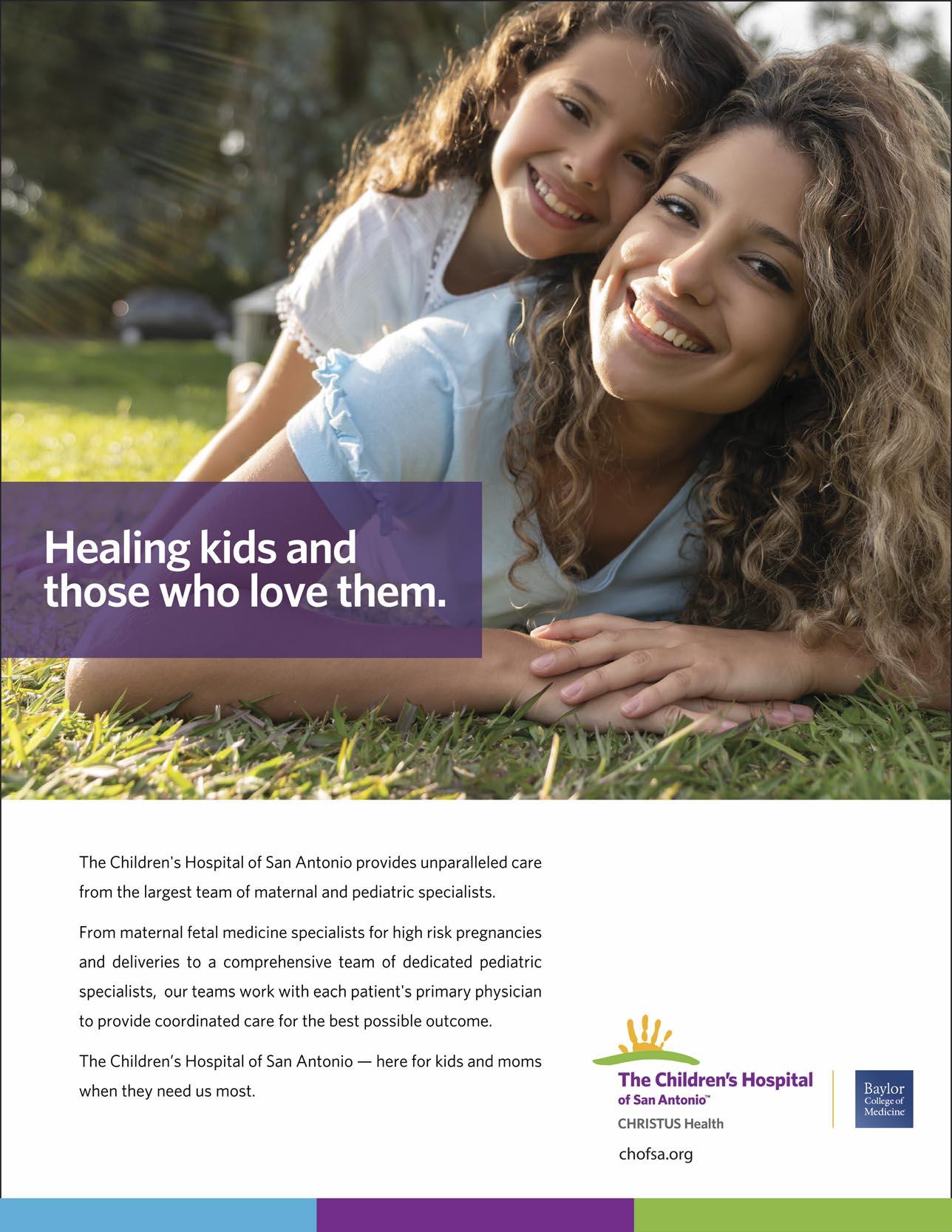
John Joseph nava, Md, President
Brian t. Boies, Md, Vice President
Ezequiel “Zeke” Silva iii, Md, Treasurer
John Shepherd, Md, Secretary
Brent W. Sanderlin, do, President-elect
rajeev Suri, Md, Immediate Past President
Woodson "Scott" Jones, Md, Member
Sumeru “Sam” G. Mehta, Md, Member
priti Mody-Bailey, Md, Member
lubna naeem, Md, Member
lyssa n ochoa, Md, Member
Jennifer r rushton, Md, Member
raul Santoscoy, do, Member
Amar Sunkari, Md, Member
lauren tarbox, Md, Member
Jenny Case, Alliance Representative
ramon S. Cancino, Md, Medical School Representative
lori Kels, Md, Medical School Representative
robert leverence, Md, Medical School Representative
Keiko McManus, Md, Board of Ethics Chair
John pham, do, Medical School Representative
Cheryl pierce-Szender, Alliance Representative
ronald rodriguez, Md, phd, Medical School Representative
Col. Cecilia Kai Sessions-Carpenter Md, MpH, Military Representative
George F. “rick” Evans, Jr., General Counsel
Jayesh B. Shah, Md, TMA Board of Trustees

Melody newsom, CEO/Executive Director
Melody newsom, CEO/Executive Director
Monica Jones, Chief Operating Officer
Yvonne nino, Controller
Mary nava, Chief Government Affairs Officer
Brissa vela, Membership Director
phil Hornbeak, Auto Program Director
August trevino, Development Director
Betty Fernandez, BCVI Director
Al ortiz, Chief Information Officer
norys Alexandra Castro-pena, Md, Co-chair
John Joseph Seidenfeld, Md, Co-chair
louis doucette, Consultant
david Schulz, Community Member
Elizabeth Clanton, Md, Member
Kristy Yvonne Kosub, Md, Member
neal Meritz, Md, Member
Jaime pankowsky, Md, Member
Alan preston, phd, Member
rajam S. ramamurthy, Md, Member
Adam v ratner, Md, Member
Faraz Yousefian, do, Member
Moses Alfaro, Student Member
Winona Gbedey, Student Member
tue Felix nguyen, Student Member
niva Shrestha, Student Member
Bethanne Bradshaw, Student Member
Monica Jones, BCMS Coo, Staff Liason
trisha doucette, Editor
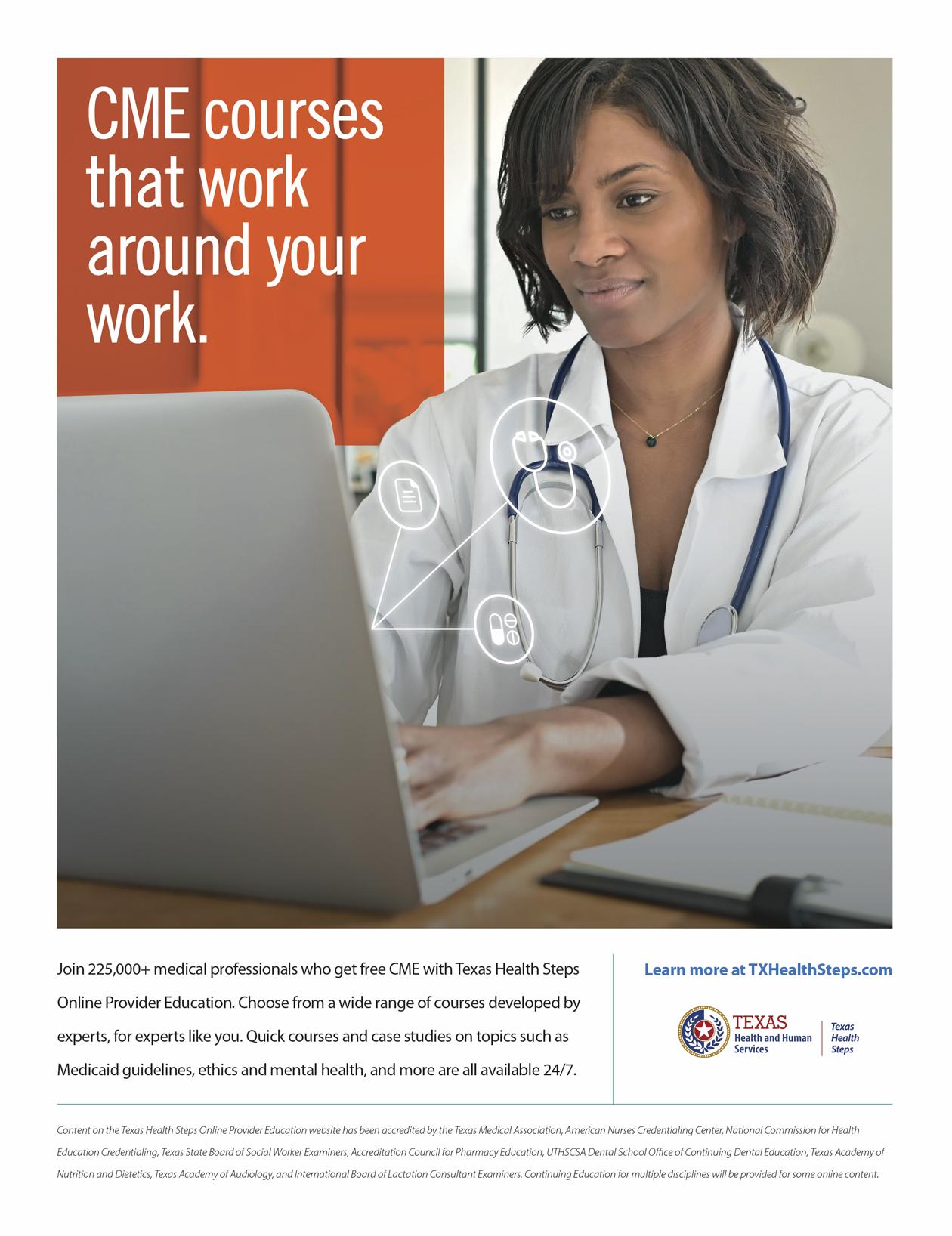
As I was preparing this month's message, I thought about the theme of this month’s issue, medical missions. I was concerned with the announcement of the closure of Texas Vista Medical Center. Did this meet the definition of a critical disastrous event which would severely impact access to care for many Southside San Antonio residents? Perhaps characterizing this as a disaster could galvanize a social justice movement. Would it be possible to convert feelings of powerlessness to animate political advocacy? Should we, as a professional organization, address a complicated hospital and healthcare event within our local community? And if we did, are we able to sensitize and energize the local community to sustain those efforts to actually influence the community response?
Then I remembered just a few years ago, when the COVID-19 pandemic started. Physicians locally organized a taskforce, for a number of reasons, to respond coherently to this novel virus. One reason was to attempt to serve as a source of reliable information to allay fears on multiple levels and to inform and guide policy development. We were able to collaborate with other community partners. Unfortunately, despite all our efforts as a taskforce, no one called on us to contribute specific medical knowledge to guide policy. Our efforts functioned well to keep ourselves informed, but we weren’t the clear leaders for that response. Circumstances did not materialize to require our consultation, and the policies were developed anyway.
The more I thought about it, I realized that the recent hospital closure was only another unfortunate economic occurrence for this area of the city. This was the most recent opportunity taken to try and make a profit while offering a service that most consumers did not care to use. Yes, this area will suffer as workers relocate to new jobs, but actual access to outpatient care will continue to be provided by the pre-existing hodgepodge of freestanding emergency rooms, acute care clinics and scattered primary care offices of various sizes. There is still a way to be referred for hospitalization if needed. The only hospital system with taxing authority will continue to be a distance away on the other side of town, with the Robert B. Green campus reminding us that several decades before, land for expansion was located in the Medical Center. In four years or so, a new UHS hospital will be built on the Southside at another area ripe for expansion. With a little patience, access will improve soon.
This is a community problem, and will require a different type of community response if we desire a different type of answer. Unless our physician members become adept at speaking the lingo of hospital administrators, or are willing to enter county political races, I don’t anticipate we will develop a voice to influence this discussion. I doubt anyone will inquire about our opinion. Nevertheless, we are all potential change agents, and ought to prepare to speak as clinical leaders if ever asked to share input.
On a lighter note, I am honored to report on a “new” group becom-
ing active in BCMS, "The 1853 Club" for retired physicians. (Note: 1853 was the year BCMS was founded.) Actually, this is not a new concept, but rather the most recently updated version of a social group for retired physicians. A group affectionately referred to as “The Medical Dinosaurs” was active until 2014, and had been formed for the same purpose. They had a leadership structure, had regular meetings, and their members even paid dues to the group to fund their luncheons and events. When the BCMS offices moved from French Place to the IH 10 location in 2005, BCMS no longer had a large enough conference room for their social gatherings. As a result, the Medical Dinosaurs group began meeting at local restaurants with appropriate accommodations. Due to advancing age affecting members' driving status, the lack of a consistent meeting location, and general apathy, attrition eventually caused a period of inactivity starting in 2014. The current group of retired physician leaders include several past presidents and other lifelong members of BCMS. Drs. Gerardo Ortega, Delbert Chumley, Rudy Molina and Buddy Swift gauged interest in reviving the group and received responses from more than 50 doctors who expressed interest. Few of those interested retired doctors expressed priorities for the group, but these four have proposed a short list of possible topics on which to focus. These include personal finance (taxes, estate planning), longevity (tai chi, brain health, healthy diets), and professional activity during retirement (licensure, challenges of current technology and the applications of artificial intelligence). Quarterly luncheons or other social events to promote camaraderie and personal growth is the core activity of this group. Del Chumley recalled that when he first started his private medical practice, it was truly a personal competitive existence, against similarly well-trained GI doctors. Now that he is retired, the war is over. Hard working retired physicians may have neglected developing friends, but now that the race is over, the previous adversaries are probably those he now has the most things in common with. Younger physicians, mostly employed, may not share in this career experience. When they are ready to retire, the group will evolve to meet their needs. I see limitless potential along with better mental health for our retired members. They deserve it. I look forward to joining the group, one of these days, but until that day comes, I will follow their development with gleeful anticipation!
If you are interested in participating with The 1853 Club, please call (210) 301-4391 or email bcms@bcms.org.
John J. Nava, MD is the 2023 President of the Bexar County Medical Society. He is interested in Primary Care, Clinical Research and Public Health.
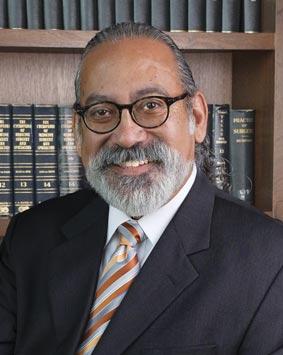
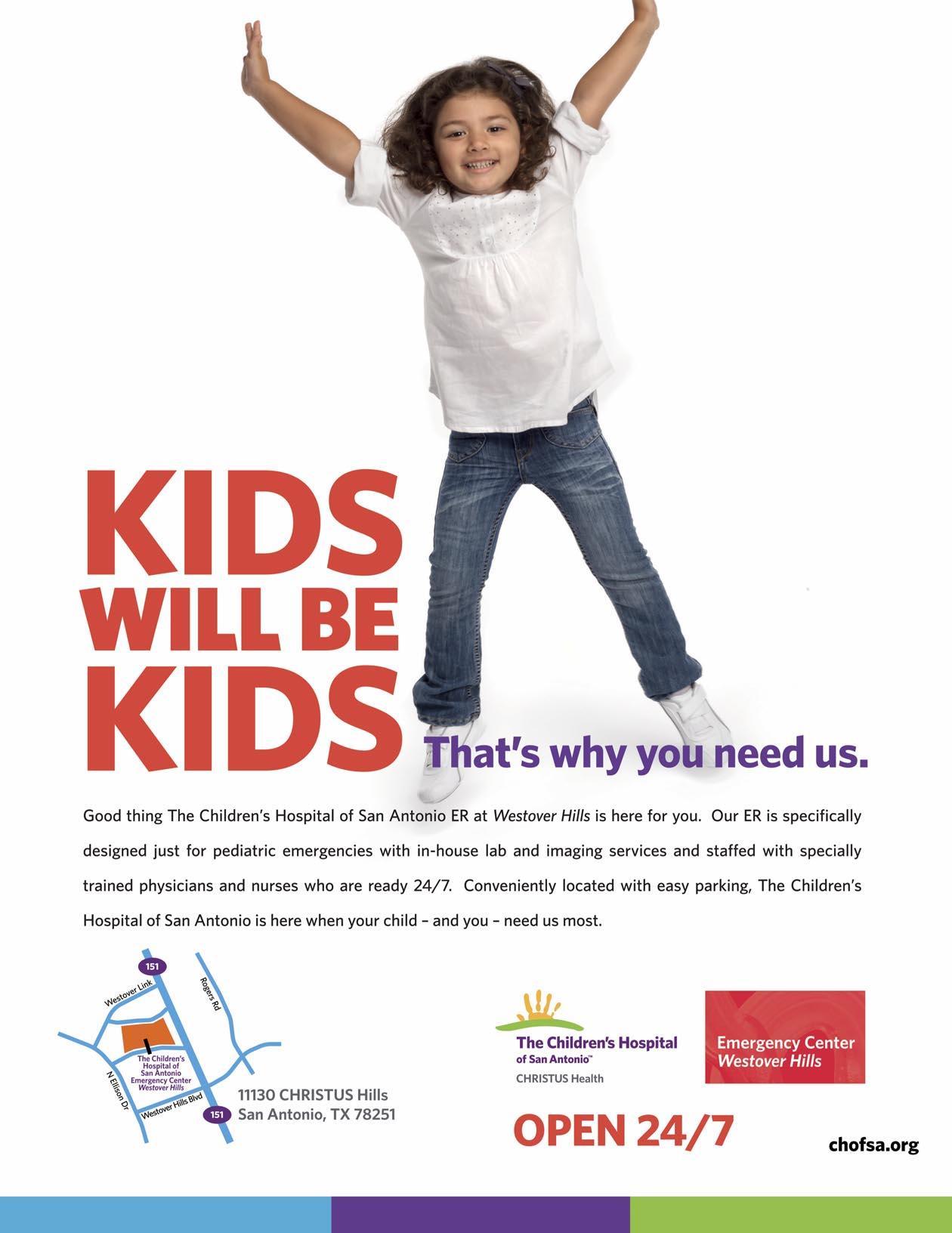
My husband was a rare male in his OBGYN residency. While the women in his program were (and are) extremely welcoming to me, for a couple of years I didn't have any peer-wives within the department. Most of his co-residents' husbands had their own careers as well as nearby family and friends. The UTHSCSA Alliance provided the kinship I needed to deal with being alone during my husband's long work hours, all while living over four thousand miles from home.
Through the UTHSCSA Alliance, I built lasting friendships with women who could relate to my situation as the wife of a busy resident and as a mother. After residency, we moved across the country for the fourth time, and neither of us knew anyone nor had an easy way for me to meet other medical spouses since, unfortunately, there was no Alliance where my husband did his gynecologic oncology fellowship. My husband's department was small—all but one other fellow was single and all were childless. It was a lonely, difficult four years and I longed for the connections I'd made at UTHSCSA.
When we returned to San Antonio, I was fortunate to be introduced to the BCMS Alliance by friends whose husbands are also now attendings. BCMS Alliance members were immediately welcoming and I once again was able to bond over our mutual understanding of the medical lifestyle.
Alliance members whose spouses are further along in their careers have prepared and reassured me about life in private practice. Many of the Alliance members' spouses now work closely with my husband, and my friendships with them have helped facilitate his relationships with physicians in other specialties. Those introductions were invaluable to a surgeon just starting out in private practice, and have ultimately helped him find the best care possible for his patients. These relationships also help alleviate some of the mental and emotional toll a career in medicine can take on practitioners.
Recently, one of our Board members reported having met a medical spouse who asked, "Why would I want
to join a group based solely on my husband's job?" We join because medicine isn't just a job, it's a career and a lifestyle. Few others can sympathize with the toll medical training takes on not just the trainee but also their families. Some of us have been with our spouses since medical school, college or even earlier. Some of us live thousands of miles from our families, uprooting our lives and moving every few years. But even those with strong family, neighborhood and other local ties often do not have the benefit of knowing others who understand the unique demands of medicine. The Alliance is a ready-made friend group who understands one another's lifestyles, struggles and successes.
Medical practitioners' long work hours also mean many of them don't have the time to advocate for themselves. There are amazing members of the Alliance who take issues relevant to their spouses' careers to State and local policymakers so practitioners can focus on patient care. First Tuesdays at the Capitol are a great way for spouses to affect positive change in Texas medicine.
The Alliance also gives us an avenue to engage in community service. We help support students just starting their paths toward careers in medicine and the allied health fields through scholarships. We also use our connections and resources to perform service projects that benefit our community at large, such as blood drives, serving meals at the Children's Bereavement Center, donating and fitting bike helmets, and helping to build beds for San Antonio youth.
My Co-President, Jenny Case, and I, along with the rest of the 2023 BCMS Alliance Board, welcome and encourage all medical spouses to join. Our goal is to build an inclusive, strong Alliance so that we can best support one another, our spouses and our community.
For more information, visit BCMSAlliance.wixsite.com/bcms-alliance.
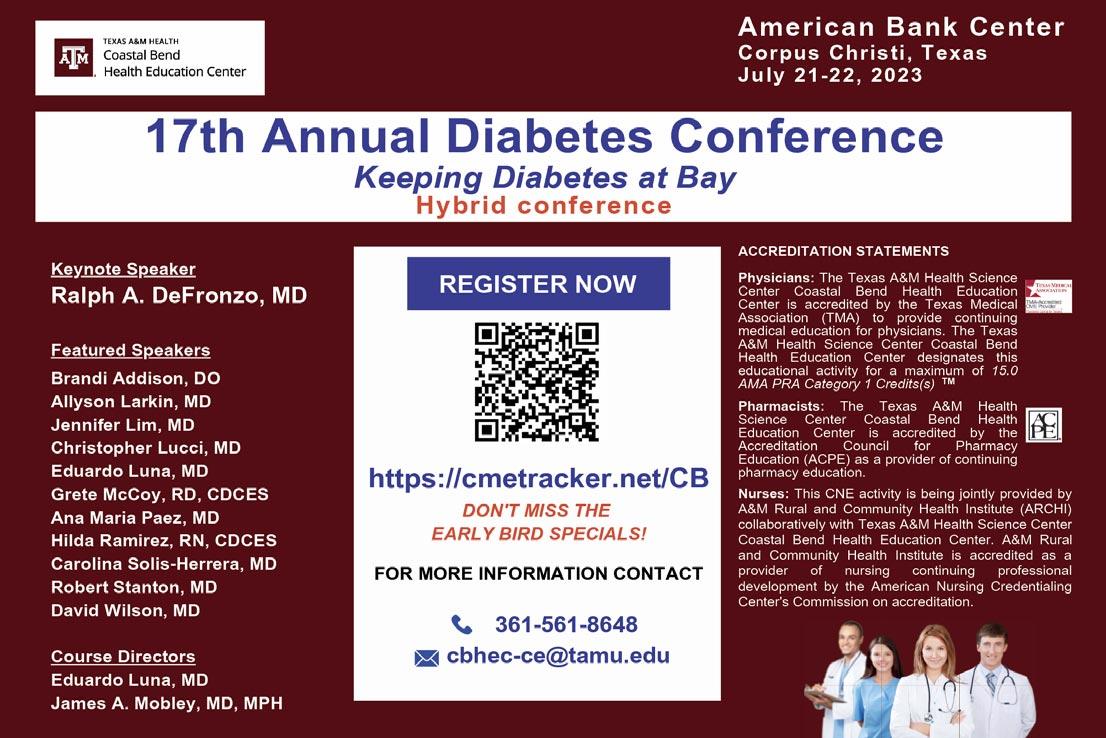

The Quijotes of San Antonio began many years ago from a prayer breakfast in the early morning at then Santa Rosa downtown. It was a small group, including pediatrician Ricardo Riojas, the administrator of the children’s hospital, Mike White, Sister Eleanor Gever, Dr. Ernesto Garza, and perhaps others that I don’t remember. After reading an inspiring scripture, our conversation focused on what else we could do to serve our Lord and His people, perhaps through a mission trip to an area of poverty in Mexico.
We were naïve of how we could do this, but we stepped out in faith. Through the Sisters of Incarnate Word, Sister Eleanor and Mike White were connected with an incredible and energetic Sister Maria Louisa Velez who lived in Mexico City. Eventually, some of the group made a trip to Mexico to visit a place called Santa Fe, which was an area close to Mexico City’s huge dump and impoverished with poor and dangerous surroundings (we were told not to be there after dark because of the danger). We were blessed with two other doctors, Internist Hugo Castaneda (appropriately named the Don Quijote of our group, an incorrigible dreamer), and Neurologist Jorge Martinez-Prieto. Both were trained in Mexico City but now practiced in San Antonio. But the one who became the “engine” of our group, and our Dulcinea, was Yolanda
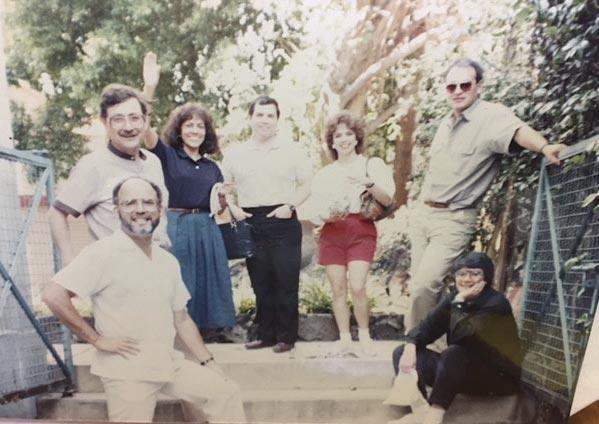
Perez, who was also from Mexico but trained in San Antonio to become one of best intensive care nurses I was fortunate to work with at Santa Rosa.
We prepared for our first mission by gathering as many medications as possible, obtaining samples from doctors’ offices and pharmaceutical agents. We recruited a pharmacist, Mike Ethridge, from Santa Rosa Northwest. I was excited and a little apprehensive, but the Spirit was there.
The first trip was truly an adventure. There was an initial shock of the conditions with dirt floors in a building next to a small church. Sheets were hung to separate exam rooms. We came to know the people, who were humble, smiling and very appreciative, to the point that we no longer noticed the surrounding poverty.
However, we hit a big roadblock on our first day. All of our equipment was hung up in Customs and they refused to release it. After the first day, we decided to purchase, with our own meager funds, a few medications. We would write out prescriptions on paper, telling the patients to come back in two days though we were not sure we would have any. We asked the nuns at the convent to pray that Customs would expedite the release.
On the following day, we went to Customs to beg, but of no avail.
We met another missionary there, Mario Carota from Canada, who lived in a little magical village, Malinalco, about 40 kilometers from Mexico City. He further discouraged us, saying it would take at least a month for us to get our supplies.
We were at a loss as to what to do and decided to go upstairs to see who we could find that might help us. As we passed a door with the name of the head of Customs on it, Julia Henion, a dynamic nurse who had joined our mission, exclaimed that she recognized the name. It was a gentleman who had dated her sister in San Antonio at one time. Immediately we entered his office and Julia told the receptionist that she was a friend to the head of Customs. When he came out, he recognized her, and they hugged while we waited impatiently. He asked what we were doing here, and we told him our problem. He said it was “not a problem” and he wrote on a sheet of paper an order to the Customs people downstairs. We rapidly went down and showed the Customs agent the paper. He frowned and said it was “not possible,” seeing it was dated that day, and refused to give us our supplies. Julia went upstairs and returned with her old friend who scolded the agent. They scrambled to get us our supplies and even provided us with a truck and driver. The missionary Mario was shocked, asking us, “Who are you guys?” He became our friend, and we visited his mission later.
We eagerly called the nuns at the convent to be outside when we arrived. There was lots of praising the Lord!
We left Mexico City that year feeling grateful for the opportunity to learn to love the people, and feeling sad that we were leaving, especially with so many more we could have helped. We really received more than we gave.
However, the Quijotes have returned several times, growing in members, including other doctors, nurses and lay helpers, and eventually establishing a clinic run by locals in Mexico City. The Quijotes went one year to Chihuahua and then on to Oaxaca where we presently serve.


Like the ripples enlarging from a pebble thrown in one end of a pond to the other side, so have the Quijotes expanded over the past 34 years. Leaders have changed but many have continued. Many other doctors of various specialties, a dentist, nurses, respiratory therapists, and lay volunteers, including teens, have captured the initial vision of being of service to the impoverished in Mexico.
Many have picked up the gauntlet, but some have continued since the beginning. I will mention a few but certainly not all and apologize for those not recognized. They include Yolanda Perez, RN (our Dulcinea); Dr. Hugo Castaneda (our Don Quijote); Dr. Ricardo and Beatriz Riojas; Dr. Roberto San Martin (deceased, leader of the Quijotes and former president of BCMS); Dr. Diana Ballesteros; Miguel Mendez, RN; Dr. Javier Garcia; Dr. Tom and Gloria Uribe; pharmacist Jim Stultz; Dr. Gilberto and Cynthia Aguirre; Dr. Gilberto Ruiz; Dr. Barbara and Sonny Aranda-Naranjo; Dr. Nancy Torres; Dr. Frank Cervantes; Dr. Jorge Sarrabia; Dr. Bruce Brockway, Dr./Bro. Stanley Cu-
lotta; Dr. Ricardo Hernandez; Dr. Bert Roberts; Dr. Cindy Beamer; sociologist John Dauer; ex-San Antonio Mayor, Dr. Bill Thornton; and our current energetic and compassionate leader, Dr. Leticia Vargas. It is important to add that many of the Quijotes brought family members to join in the mission to serve the people of Mexico.
A most significant addition has been the health departments of the University of Incarnate Word, providing faculty and students at the Schools of Pharmacy, Optometry, Physical Therapy, Nursing and Dentistry. Special thanks to the leadership of ambassadors of health: Sister Teresa Stanley (many important roles with the Sisters of Incarnate Word to include UIW Board of Trustees, General Superior of the Sisters of Charity of the Incarnate Word, Director of Nursing, and my companion on trips to Oaxaca); Dr. Barbara Aranda-Naranjo (former
continued on page 14
continued from page 13
provost and one of the nurses I had the privilege of working with at Santa Rosa in my first years of practice); Dr. Caroline Goulet (founder of the school of Physical Therapy at UIW, interim provost of UIW and “Frenchy” to me); and Sister Maria Louisa Velez (an original Quijote).
I also need to recognize and express our appreciation for the tremendous support from the Mexican government and health officials, especially Doctora Liliama Irasema Garcia; Club Rotario Internacional; private doctors; Universidad Autónoma Benito Juárez de Oaxaca (UABJO); and Regional De Suresta and their student volunteers. We also thank the people of Oaxaca who make lunch for us and invite us into their communities for the health mission. They truly became Quijotes without whose support we would have not been as successful.
The Quijotes of San Antonio is a nonprofit, tax-deductible group of volunteers. It now has about 90 volunteers and averages servicing 400 patients a day for a week annually in the fall, providing them with consultations and health education, medications, dentistry, ophthalmology, physical therapy, podiatry, dietary advice, and referrals to local hospitals and health facilities in Oaxaca and surrounding villages.

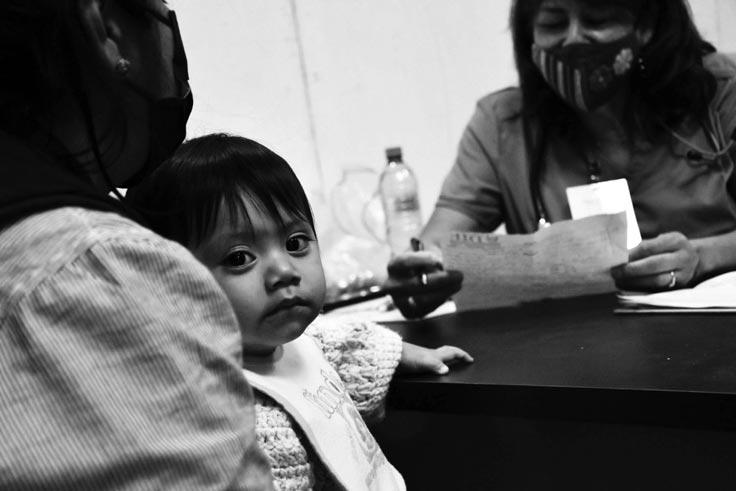
The vision of the Quijotes, which began with a prayer breakfast, continues to fulfill the need to serve the poor in Mexico in His Name: “Let us not grow weary of doing g ood, for in the proper time we will reap the harvest if we do not give up.” Galatians 6:9.
If you would like to help the Quijotes Medical Mission Group, you can make a non-taxable donation on their website: www.quijotesofsanantonio.com



Humanitarian medical missions are immensely positive and rewarding experiences shared by many drawn to the medical field. There are a number of ways to be involved with this type of work. Many members of the local San Antonio ophthalmology community have participated in U.S. military missions over the years. Military medical missions are typically executed with goals such as strengthening international relations, creating opportunities for military personnel to train in austere environments, providing assistance to the underserved, and providing medical knowledge exchange when partner-nation capabilities allow.
The tradition of these missions is strong and far-reaching. However, for military ophthalmology, change is in the air … change that is hoped to lay the groundwork to match emerging trends noted as best practices within civilian circles of international ophthalmology outreach. The change being embraced involves a new mission model dubbed by military ophthalmology as “iROK,” or International Readiness Ophthalmology Knowledge exchange. iROK is the newest option for military leaders to consider when planning an international ophthalmology partnership. This is in contrast to what has been done in the past, now considered the “Legacy” model.

A military ophthalmologist looking back on Legacy missions will likely recall a trip to a remote and poorly served (from an ophthalmology perspective) area with a large team of U.S. military members and several large pallets of supplies shipped from their home base. Legacy teams are generally self-sufficient providing the majority of necessary
personnel, equipment and supplies required for the mission. For a typical Legacy mission, the U.S. team would, to a degree, build up an operating area and augment local hospitals for an about three-week period of time. Over this time, the Legacy team typically executes roughly two to four hundred surgeries (primarily cataract, pterygium, minor oculoplastics and sometimes strabismus), and then carefully dismantles and packs up the equipment to return home.
Legacy missions are wonderful in many ways. They provide care in places that have little or no ophthalmic surgical capability. They push military members to set up a functional medical system in an austere and resource-constrained environment. This model challenges team members to bring difficult cases to safe conclusions. The Legacy mission model is challenging, rewarding, and has been executed with great care and great results all over the world for several decades.
Despite the many positives, a number of potential downsides to this model in certain circumstances have been identified by military as well as NGO doctors. Some areas of concern include unintended disruption to a local healthcare ecosystem that can occur when a surgical team from a high-income country temporarily visits a low-income country. Sometimes, a visiting team offering free surgery can have unintended negative consequences for the few local providers by diverting needed income. Sometimes visiting surgical teams can leave a large number of patients requiring post-operative care or even difficult-to-manage post-operative complications that require significant but limited local resources. Challenges like these can make it difficult for a local area to handle isolated or repeated visits from large visiting surgical teams. With observations like these, the U.S. military is seeking to offer an alternative mission model to address potential downsides for international ophthalmology partnerships. This new model is iROK.
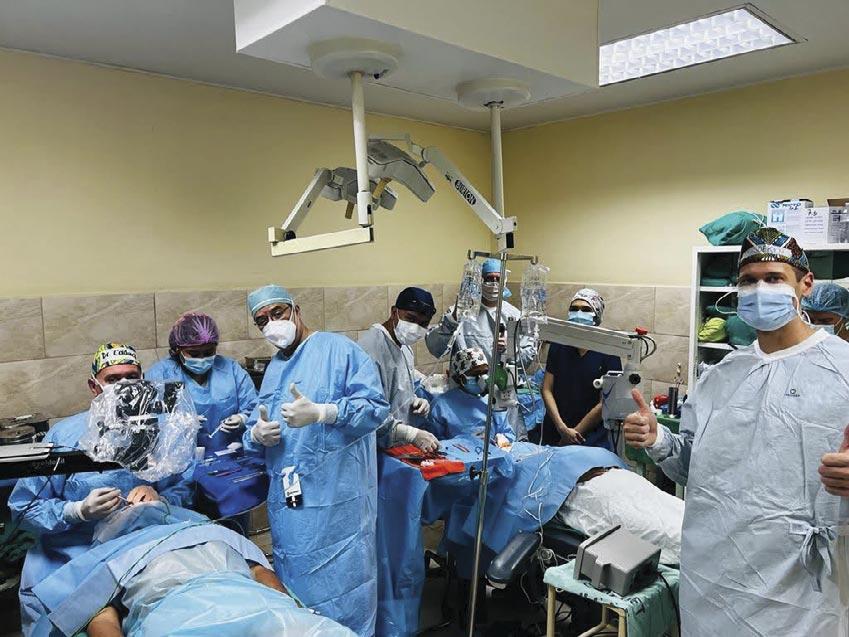
iROK is envisioned as a slimmer team with a heavier focus on international peer-to-peer knowledge exchange. Instead of 20-30 Americans on a Legacy team, there are typically six to eight members on an iROK team. Rather than setting up a separate and sometimes independent medical system, the iROK team partners with an existing local team, integrating within the established care system. Instead of focusing on just accomplishing surgeries and conducting internal training, an iROK team focuses heavily on skills transfer both to and from the partner nation medical personnel.
The stimulus for proceeding with a new international ophthalmology platform was birthed in the execution of a large military mission called HEART 22. HEART 22 was a multidisciplinary military medical engagement with multiple Central American partner nations. While it involved many planners and different specialties, importantly it involved a smaller ophthalmology team that spent two weeks with partners in Honduras and two weeks with different partners in
Guatemala. The partner site locations, team dynamics and accomplishments were different at each of these two sites, but the small American team was the same. The American ophthalmology team of five included three ophthalmologists and two technicians. The team was heavily involved with surgical execution and knowledge exchange. While a primary initial objective was to teach, it quickly became clear that the local surgeons were extremely skilled and very capable of functioning in lowresource environments with a different skillset. We found that we had at least as much to learn from them as we had to teach. The bi-directional dynamic was extremely positive on both sides. Newer corneal transplantation techniques were taught, and first-time surgeries were performed expanding local capabilities. U.S. military doctors and technicians gained new skills applicable to military deployment functioning in austere environments. The reception was so positive that the team proposed a slightly modified return trip to the Honduras site six months following HEART 22 with the goal of “fine-tuning” the iROK model and attempting to establish an enduring partnership to the mutual benefit of U.S. and partner nation components. This partnership approach focuses on the different strengths of each side while at the same time seeking to maximally address the different needs of each partner.
continued on page 18
continued from page 17
plant and phacoemulsification (modernized high-cost, technology-dependent cataract surgery) teaching platform and grew in its resourceconstrained practices and manual small incision cataract surgery (modernized low-cost, technology-independent cataract surgery) skills. During the 2023 Honduras iROK mission, the team repeated the teachings and practices but also brought surgical retina along. The successful repeat engagement in Honduras is hopeful grounds for a foundation of a regularly reoccurring partnership.
While this newer iROK approach is not expected to fully replace Legacy missions, it seeks to acknowledge that as a large and far-reaching system, the U.S. military needs to have multiple and flexible approaches to address a diverse landscape of challenges and partnerships. It is likely that the Legacy missions will continue in some circumstances where local ophthalmic capability is not available, but it appears that iROK will be a more attractive partnership model for some locations. As of today, U.S. military international ophthalmology leaders are seeking ways to successfully meet the needs of both the U.S. military and its international partners by offering both Legacy and iROK models.
Dr. Tim Soeken is a cornea specialist and Air Force major at Brooke Army Medical Center and Wilford Hall. Dr. Soeken is also the first active duty military ophthalmologist to complete a global ophthalmology fellowship and is now serving as the lead for Air Force international ophthalmology engagements.
Dr. Darrel “Casey” Carlton is a comprehensive ophthalmologist and Army colonel at Brooke Army Medical Center. Dr. Carlton has been heavily involved in humanitarian ophthalmic surgical missions with the U.S. military since 2009.

Dr. Matt Caldwell is a cornea specialist and Air Force colonel at Wilford Hall. Dr. Caldwell is currently transitioning to civilian practice in the San Antonio area after several years of serving as the chief ophthalmologist for the Air Force.



The views expressed herein are those of the author(s) and do not necessarily reflect the official policy or position of the Defense Health Agency,
Army
Center, the Department of Defense,
any agencies under the U.S. Government.
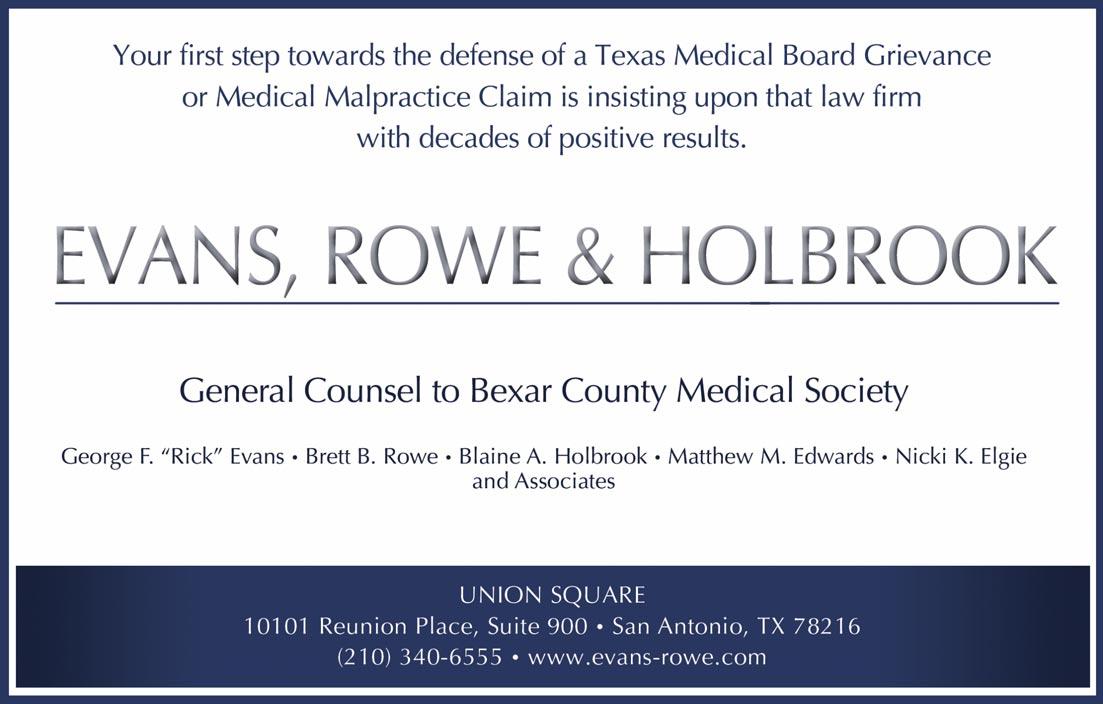
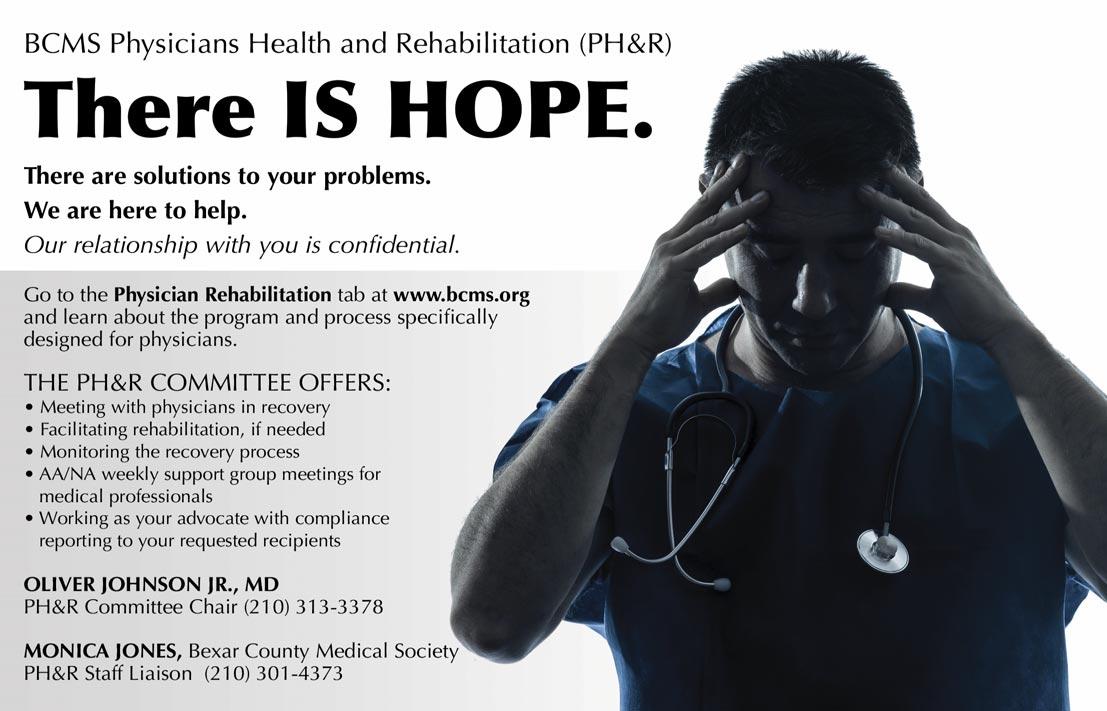
On an early winter evening, over 250 pounds of equipment was loaded into 210 cubic feet of cabin space and flown more than 140 miles to attend the delivery of a 28-week, 1.3 kg neonate in rural Texas. The infant’s mother was too far along in labor to transfer to a tertiary facility prior to delivery. Covering what would usually take over two-and-a-half hours by ground ambulance, the team flew to the sending hospital in under 50 minutes; arriving just 10 minutes prior to delivery. Full neonatal resuscitation was required: the neonate was intubated, received CPR, epinephrine and blood prior to stabilization for transport. Sixty-nine days later in the neonatal intensive care unit (NICU), the former preemie went home bottle feeding and without the need for supplemental oxygen. They are one of the many patients impacted by the development and capability of specialty transport teams, in this case, a neonatal transport team. Preterm and critically ill infants not only require specialized care but also specialized equipment to optimize outcomes. This includes a heated isolette, high frequency ventilators as well as lines and tubes to fit the smallest of patients.
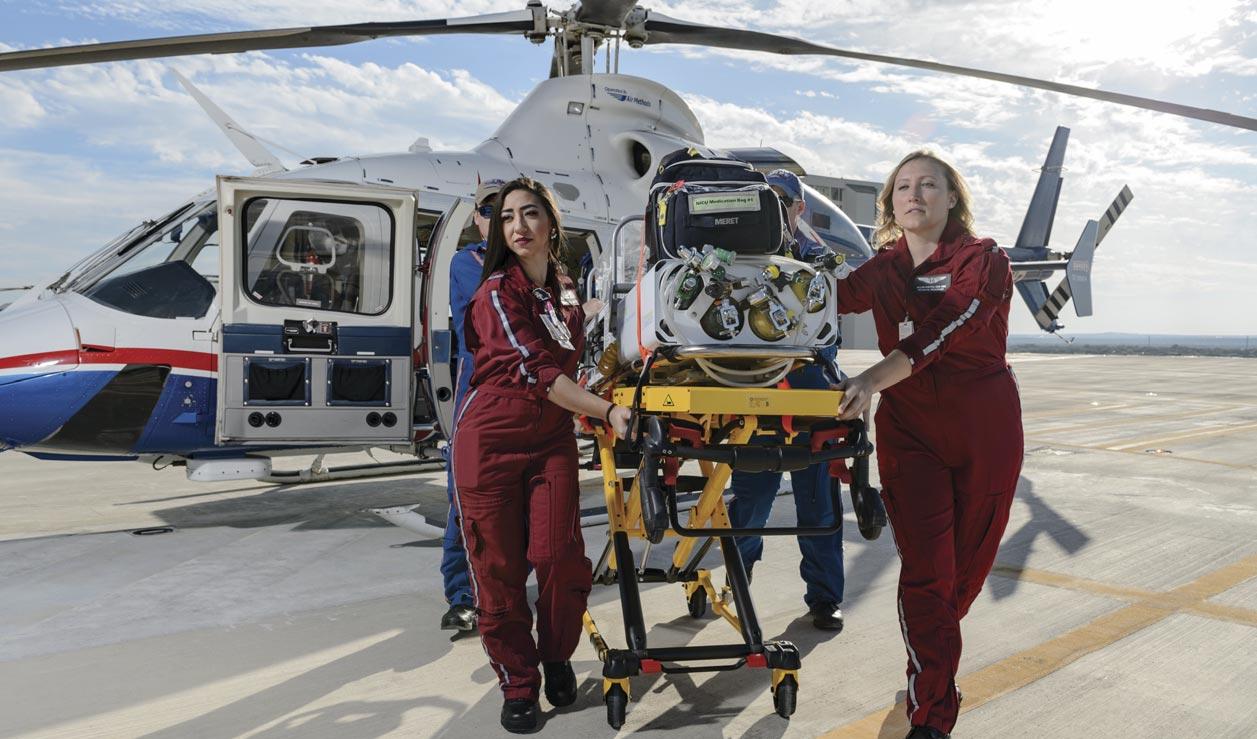
As far back as 1898, the first iteration of a transport incubator was designed by Dr. Joseph DeLee in Chicago5. This occurred even before
the advent of the first formal neonatal intensive care unit in 19605. Wilford Hall Military Medical Center in San Antonio pioneered the research and development of neonatal specialty transport equipment as well as the highly specialized extracorporeal membrane oxygenation (ECMO) transport. In the 1980s, the first successful ECMO transport was completed and published in “Perfusion”4. Not only were these transports some of the most critical neonates, but they spanned the distance of oceans by bringing patients to San Antonio from Asia, Europe and Hawaii4.
While these measures and advances increased the survival of preterm and critical neonates, there remains stark outcome differences between very low birthweight (VLBW; defined as a birthweight < 1,500 grams) infants who are born at tertiary facilities compared to their outborn counterparts. In 2021, VLBW survival without significant morbidity was 53.9% for neonates born at tertiary facilities versus 40.6% for outborn neonates6. Incidence of severe intraventricular hemorrhage (IVH) was more than doubled for outborn infants compared to their inborn counterparts6. Significant stressors of transport include temperature instability, noxious sensory stimuli (sound and
vibration) and altitude effects on oxygenation and gas expansion3 . With these considerations, clinicians have moved to advocate for maternal transport prior to delivery of a high-risk fetus, if possible5. Many maternal and neonatal clinical factors such as hemodynamic instability, placental abruption, progression of labor, non-reassuring fetal heart tones, prolapsed umbilical cord or imminent delivery weigh into the maternal transport consideration process. Shared decision-making between referring and accepting providers is crucial in these instances to provide the maternal patient with information on risks and benefits of transport, risk of delivery in route, and clear expectations. All members of the healthcare team participate in the discussion and respect the patient’s values and decision2
With a land mass of over 260,000 square miles, the Texas landscape requires utilization of air ambulance services to reach critical rural healthcare facilities who request a specialized transport team. Options for specialty transport team mobilization include ground ambulance, rotor wing helicopter and fixed wing planes. Each mode of transport has its advantages and disadvantages. While ground transportation is usually the slowest method, the size and absence of weight restrictions allow for more equipment, team members and family to accompany the patient5. Rotor wing aircrafts are significantly faster than ground transport and usually are able to bring the specialty team directly to the referring hospital helipad. However, limitations such as weather, tight space, equipment weight and total distance commonly play a role in decision making5. Due to the helicopter’s inability to moderate internal cabin pressure, physiologic gas expansion at altitude can impact patients with conditions such as a pneumothorax, congenital diaphragmatic hernia or necrotizing enterocolitis5. Fixed wing aircrafts are preferred for distances > 150 miles and can generally hold more weight3 While they have fewer weather restrictions than rotor wing aircrafts, limitations may include availability of nearby airports and ground transport between airport and hospital5
Member composition of neonatal specialty teams can vary by program and can include a combination of registered nurses, respiratory therapists, paramedics, physicians and advanced practitioners. Team members are specially trained in skilled procedures such as intubation, umbilical line placement and needle thoracentesis. Current specialized equipment allows teams to provide high frequency ventilation, inhaled nitric oxide, servo-controlled active cooling and ECMO during transport. This can improve patient stability and outcomes by allowing these therapies to be initiated prior to arrival to the NICU3.
Standardized guidelines, quality assessment and improvement, certifications and conferences have expanded in recent years and are moving specialty transport medicine forward through formal education, practices and collaboration. Transport programs now have a dedicated system to input de-identified metrics, allowing for benchmarking quality indicators and accelerating improvement initiatives. The Ground and Air Medical qUality in Transport (GAMUT) database includes
more than 350 programs internationally and allows programs to compare over 40 performance metrics with their peers1. It is important to note that transport quality occurs prior to the initiation of the transport itself. It begins with the collaboration, communication and education to keep patients close to home whenever possible, and safely transport whenever necessary.
Since its inception, neonatal transport has continued to be an important specialty team service to the communities spanning South Texas. Critical equipment necessary for stabilization along with experienced practitioners bring the NICU to the patient, providing lifesaving care before the patient ever arrives to a tertiary hospital. Formal education, systems and quality initiatives specific to the transport environment are working to continue to elevate and improve the outcomes of the smallest Texans.
1. Aspiotes CR, Gothard MQ, Gothars MD, Parrish R, Schwartz HO, Bigham MT. Setting the Benchmark for the Ground and Air Medical Quality in Transport International Quality Improvement Collaborative. Air Medical Journal. 2018;37(4), 244 – 248. https://doi.org/10.1016/j.amj.2018.03.002
2. Begley K, Daly D, Panda S, Begley C. Shared decision-making in maternity care: Acknowledging and overcoming epistemic defeaters. J Eval Clin Pract. 2019;25:1113-1120. https://doi.org/10.1111/ jep.13243
3. Guidelines for Air and Ground Transport of Neonatal and Pediatric Patients. 3rd ed. Elk Grove Village, IL: American Academy of Pediatrics; 2007
4. Null DM, Yoder BA, DiGeronimo RJ. Early Neonatal Research at Wilford Hall US Air Force Medical Center. Pediatrics February 2012; 129 (Supplement_1): S20–S26. 10.1542/peds.2010-3797e
5. Perry SE. Fifty Years of Progress in Neonatal and Maternal Transport for Specialty Care. J Obstet Gynecol Neonatal Nurs. 2021;50(6):774-788. doi: 10.1016/j.jogn.2021.04.013
6. Vermont Oxford Network Database Summary for Infants 501 to 1500 Grams Born in 2021. Burlington,VT: Vermont Oxford Network; 2022. Disclaimer: Vermont Oxford Network had no role in the concept, design, analysis or formulation of this work. The discussion and views belong solely to the co-authors and do not represent the opinions of Vermont Oxford Network.
Rachael Farner, MSN, CCRN, C-NPT, C-ONQS is the neonatal transport director at University Hospital in San Antonio, TX. She has been a NICU transport nurse for over 13 years and enjoys transport medicine, outreach education and simulation. She is surrounded and supported by an amazing transport team as well as a team of leaders, mentors, physicians, rural colleagues and NICU professionals who help make neonatal transport a joy!

 By F. Wright Hartsell, MD
By F. Wright Hartsell, MD
Sliding into Guatemala City in February 2023, the familiar smell of diesel fuel and the sight of people racing against the traffic to cross the street felt welcoming. Our group, Shared Beat, has been going to Guatemala twice per year since 2006, and we have been on every medical outreach trip, except from July 2020 to July 2022 (COVID-19-related cancellation). Our team members have come from across the nation but have some connection to the San Antonio medical community.
Shared Beat was formed in 2006 to support health and wellness at a school reinforcement center in the Guatemala City dump neighborhood. Over the years, our primary focus remained the same, but we have branched into rural Guatemala and now have over 1,500 students in our wellness program. In February, our team of 20 performed 651 physical exams on students ages 3-18, identified 60 students for op -
tometry referral, and provided glasses for 98 adults in two community vision clinics.
In years past, our teams also provided student parasite prevention, fluoride treatments, and charted height, weight and BMI. That changed. Our Guatemalan wellness partners in Guatemala City and in rural Guatemala now manage those essential components/interventions of student wellness as well as health education and medical/vision follow-up. Those teams are led by current and former Shared Beat scholarship students.
The Shared Beat Health Careers Scholarship Program began in 2008. The initiative was founded to increase depth in the Guatemalan healthcare system by providing a vehicle for qualified Guatemalan students to start and complete a healthcare career. Since inception, 11 students have graduated from their university studies and 14 from Health Careers High School. Currently there are nine students studying; four are in medical school. Most are students who continue to live in the neighborhoods and rural communities served by Shared Beat’s health and wellness programs.
Iris, the first Shared Beat Scholarship student to study medicine, is now in her sixth year of seven. Below is a statement she made about her dream of becoming a doctor.
“My dream of going to the University to study medicine began five years ago. I wanted to dress up in white and save many lives, care for and ensure the health of children. I thought it was an impossible dream. Medicine is an expensive profession to study and my parents barely earn enough to pay for food. It is also difficult to obtain a letter of acceptance to the University.
“Through a mentor, I applied for a Shared Beat Scholarship to study medicine. When receiving the scholarship, I was filled with great joy. But at the same time, I was nervous. The year was very difficult; I had many problems at home. My dad does not support my decision to go to the University. He wants me to continue working as a “recycler” in the dump to make money for the family. Having the person you need on your side, in your way, hurts.
“The first time I took the University examinations, I ended up with an appendicitis and made unsatisfactory grades. I was sad, but there were always people telling me I could “pass,” to fight, and not give up. When I gave my dad the news of passing the examinations and being accepted to the university, he said nothing. I chose to not look at him as an obstacle, to continue to fight, and prove I can be more than he imagines. Life is for fighters!”
– Iris, sixth-year medical student, Guatemala City, Shared Beat Scholarship RecipientIris is a prime example of why we started the scholarship program. With so many obstacles in their way, how is becoming a doctor, nurse, physical therapist … even possible when you are impoverished? The idea of our students taking over our jobs occurred to us but did not completely sink in until COVID happened.
Being away from Guatemala for the last three years created concern that our programs would fall behind. In fact, our teams and partners on the ground in Guatemala continued the essential work, without us, under extremely difficult circumstances. In February 2023, our shortterm one-week volunteer outreach missions restarted and remain valuable. The outreach reconfirms our connection with scholarship students, and the medical outreach team performs a comprehensive evaluation of school-age students to ensure they have the best opportunity to succeed with wellness. Each student receives in-depth wellness assessments and interventions for general health, including glasses for vision screens not passed, referrals for any pulmonary, cardiac or musculoskeletal issues, hearing screens with provision for hearing aids, screens for safety concerns, and advisement for dietary changes that are culturally achievable. At the same time, we are able to create mentor relationships. The students see the possibility of becoming healthcare providers. Creating sustainability and opportunity is the truly gratifying piece. Our hope remains the same—to work ourselves out of a job!
Shared Beat’s next outreach effort is the last full week of July 2023. For more information regarding the medical outreach or scholarship programs, go to www.sharedbeat.org.
As a member of BCMS and living in the San Antonio area, I feel grateful for all that our medical community can provide and that (my gratitude) is magnified with each medical outreach in Guatemala.


F. Wright Hartsell MD, Member, Shared Beat Board

Jenny Hartsell, Executive Director and Board Member, Shared Beat
Marie Berkenkamp, MD, Member, Shared Beat Board
F. Wright Hartsell, MD is a member of the Medical Staff in MHS, and prior Chief of Staff. He was the EMS Medical Director for Methodist AirCare for the past 14 years, an Emergency Medicine Physician with Greater San Antonio Emergency Physicians since 1992, and previously with the U.S. Air Force. Since 2020, he has served as CMO of BCFS Health and Human Services, now FirstDay Foundation, with the medical oversight of its Disaster Management in Texas and Louisiana. In 2022, Dr. Hartsell was the recipient of the Texas Division of Emergency Management physician award.
 By Linda Porter-Wenzlaff, PhD, LPC-S, NCC, MSN, RN
By Linda Porter-Wenzlaff, PhD, LPC-S, NCC, MSN, RN
It wasn’t happenstance that during pandemic isolation pets were adopted at historic rates. People sought the comfort and connection animals can provide. A friendly dog decreases blood pressure, lowers cortisol levels and increases the release of oxytocin. A pet’s non-judgmental presence provides connection, acceptance and security; and they live serendipitously helping to interrupt the human tendency to ruminate or worry. Therapy animals provide those same benefits; most pronounced with vulnerable persons.
Therapy Animals of San Antonio (TASA) is an all-volunteer organization established in 1989. Our mission is “Bringing People and Animals Together for Healing.” TASA provides human animal interactions (HAIs) at no cost to persons in Bexar County, thirteen surrounding counties, Waco and Houston. We recently established the Crisis Animal Response Program (CARE), which serves communities across Texas. TASA follows accepted national standards and evaluates teams every two years for health, obedience skills, temperament and aptitude. Our priorities are safe, therapeutic interactions, client confidentiality and the ethical treatment of our animal partners.
TASA services include: therapy animal team visitations to healthcare, mental health and long-term care facilities, as well as other vulnerable populations (such as Ronald McDonald Homes, Battered Women’s Shelter, Children’s Bereavement Center and the Krier Juvenile Correctional Facility); community education through presentations to local, state and national organizations and conferences; consultation; a childhood literacy program; and support for things like the Children’s Hospice Camp and the Humane Society Summer Camp.
Responses to therapy animals vary, and may be as simple as brightening a person's day or as dramatic as changing the course of a person's life. Examples of the latter include a child in intensive care who responded for the first time when his hand was placed on a therapy animal settled on his bed; a man with serious cardiac complications who was slowly giving up on recovery when a therapy dog visit gave him the desire to fight for his life; a child in school who learned over time to control his behavior enough in class to participate in studies through motivation to interact with a therapy dog; a family at a Ronald McDonald House who hold onto the memory of seeing their child happily interact with a therapy dog prior to taking her home for hospice care; and a retired pharmacist who waited outside his retirement home each
week to interact with a visiting therapy dog stating it made him feel connected as he had little in common with his fellow residents.
CARE teams work routinely as therapy teams and have also been trained for crisis response (FEMA, CPR and first aid, eight hours of classroom education, and field activities to build hardiness). In order to accommodate the demand of a large CARE deployment anywhere in Texas, TASA collaborated with PAWS for Service, providing CARE training to their interested experienced teams. We now have 40 fully certified CARE teams. This program expands the benefits of HAIs at two levels. CARE teams partner with local school district counselors responding to critical incidents (the death of a student, teacher, etc.) to provide student counseling. CARE teams deploy across Texas to support communities experiencing crises and disasters. The same physio -
logical benefits found during the pandemic with pets apply here. In addition, the presence of a friendly animal supports a sense of physical and emotional safety, which facilitates interactions and interventions. They also offer safe touch and provide engagement without effort or the need for explanation.
The evening of the shooting at Robb Elementary School, CARE teams responded to the Civic Center in Uvalde, Texas. Barbara Chase, MS, MAC, LPC, Coordinator of Family and Student Support, who coordinated animal therapy support in Uvalde writes:
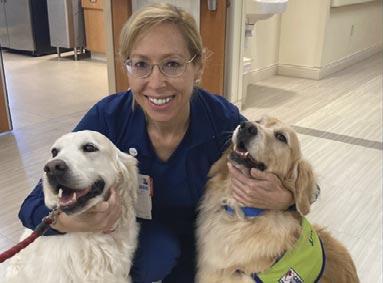

“Linda Porter-Wenzlaff, Walter Macias, and the teams of the Therapy Animals of San Antonio brought comfort and compassion to the community of Uvalde in May 2022 and for several additional months. The teams came to Uvalde in the capacity of crisis response and spent many hours at the Civic Center on the days following the tragedy at Robb Elementary. They went to other locations around Uvalde where people visited and gathered to be available to people who were struggling and in pain. The teams brought calm and helped ease stress for some individuals impacted by the chaos in our town. The therapy animal teams were especially helpful during summer school and during the first seven days of the 2022 school year. They were present on all our campuses to support our students, teachers, and staff. The teams of dogs, the occasional cat and even a rabbit, would visit classrooms bringing joy and helping people cope. The transition back to school was challenging for some students and staff, and TASA’s
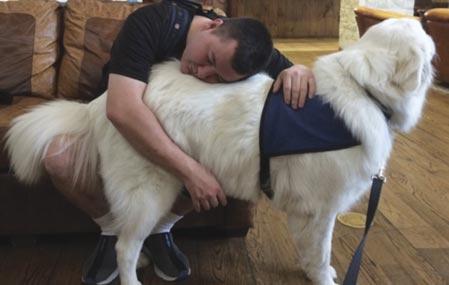
presence was a blessing. Teams have been present at other school family functions. The families, students and staff are always excited to see the TASA teams! We are grateful for the partnership that has been established with TASA.”
Our teams have individual cards for each animal that we distributed during visits in Uvalde so that children could “have their favorite animal with them” when we were not there. Some slept with these cards, others carried them everywhere and they began to collect and trade them like sports cards. It was a moment of fun and normalcy each day and a reminder of the safe, loving acceptance each animal provided for them.
The Children’s Bereavement Center of South Texas has established a satellite in Uvalde. We will provide canine therapy teams there as long as they are needed in collaboration with PAWS for Service. We also remain available to the schools as needed as we continue to bring people and animals together for healing.
Linda Porter-Wenzlaff, PhD, LPC-S, NCC, MSN, RN is a nationally recognized expert in HAIs with over 30 years of experience working with dogs and horses in her healthcare and counseling practices. She is the Founder and Co-Director of CARE and is a current TASA and CARE team member with her Sheltie, Indigo Moon.


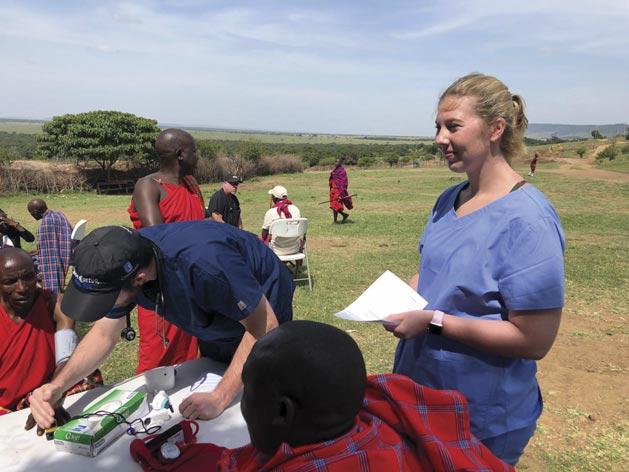 By Thomas Scully, OMS-III
By Thomas Scully, OMS-III
As medical students, we are often taught to view healthcare through the lens of our own community. We learn to visualize ourselves working with patient populations on a local, state or even national scale, using our knowledge and skills to make a difference in our own communities. It's crucial that we understand the healthcare landscape locally, but it's equally important that we broaden our perspectives to include the global health landscape.
Global health is an area of study that prioritizes improving health and achieving health equity for all people worldwide1. It recognizes that health challenges do not respect borders or boundaries, and that to make a meaningful impact, we must work together as a global community. This critical field addresses some of the world's most pressing health challenges, including disease outbreaks, poverty-related illnesses and health disparities1.
Currently, there are approximately two billion people globally who lack access to healthcare2. These people are often unable to afford medical care or live in remote areas where healthcare is inaccessible. Medical mission trips offer a way for healthcare professionals and volunteers to provide medical care, education and resources to these underserved communities. By participating in these trips, students and healthcare providers can gain a deeper understanding of global health issues and make a positive impact on people's lives.
During medical mission trips, volunteers work alongside local healthcare providers. These trips offer a unique opportunity to work in challenging environments where resources are limited and patients often present with complex health issues. Experiences gained from these trips
can be life-changing for both healthcare providers and the communities they serve. One report demonstrated that students who had undergone a global health elective during their medical education had a 22% increase in pursuing a career working with underserved groups3.
Personal experiences with medical mission trips have helped me better understand the importance of global medicine and the impact that physicians can make globally. I’ve been fortunate to participate in mission trips in both Kenya and the Dominican Republic. Kenya opened my eyes to the stark differences in healthcare practices and the immense challenges faced by medical professionals in rural areas. One pregnant woman I assisted walked miles to receive basic obstetric care in a small, concrete, recourse-poor clinic. Witnessing this and helping deliver her baby was incredibly humbling as I realized the significant impact that healthcare providers can make in the lives of others.
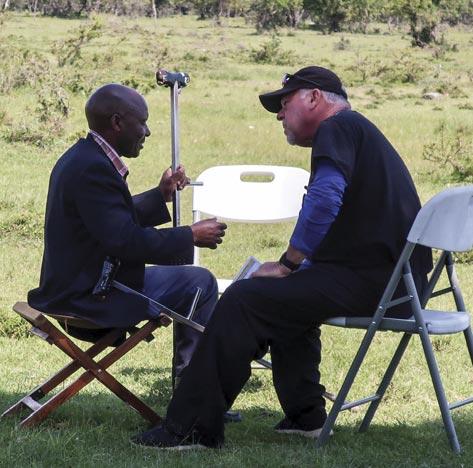
Another patient who left a lasting impression on me was a man with a retained foreign body. He had been suffering for years without proper medical care, with a foreign body protruding from his leg. With the nearest hospital located some five hours away, the surgeon accompanying us removed it. Using only 3 cc of lidocaine and the few sterile instruments on hand, he removed the foreign body just outside a bustling local market. The experience was a reminder that many individuals in rural areas still lack access to basic healthcare and supplies necessary for adequate treatment.
This was further exemplified when a little boy came to our clinic with a swollen face, and we quickly recognized the possibility of Burkitt's lymphoma, which is known to be endemic in Africa. The family did
not have the financial means for treatment or travel to the nearest hospital, leaving the child in a difficult and potentially life-threatening situation. I was fortunate to have these experiences prior to entering medical school. As a current third-year medical student looking back, these experiences increased my cultural competency and passion for providing quality care to underserved populations.

Global health initiatives not only function to improve access to quality healthcare but also provide opportunities for interested students to develop their clinical skills. Depending on the location and supplies available, students have opportunities to gain in-depth experience in specialties like obstetrics, pediatrics, internal medicine and even surgery. The scarcity of available medical care means that learners can have more hands-on experiences and a greater degree of autonomy to hone their skills. With minimal to no technology available, these opportunities offer a chance for students to improve their diagnostic skills. Equally as important, global health gives providers an opportunity to broaden their public health knowledge and improve their own culture humility3.
Some of the biggest obstacles that global health strives to overcome include health inequity, managing disease outbreaks, and the economic impact that these factors produce1. While developing nations have more recently seen a shift towards a greater prevalence of chronic medical conditions4, 65% of the burden of disease among the poorest billion is composed of communicable, maternal, neonatal and nutritional diseases5. Low- and middle- income countries (LMIC) have the lowest accessibility and affordability to medicines2. Lack of proper pediatric formulations, exorbitantly marked up generic drug prices, and poor regulations and oversight are some of the most common problems that cause a significant financial burden for those needing care2. One of the biggest criticisms of short-term medical missions is the lack of continuity of care and poor integration into the local healthcare system. However, these missions promote increased global health participation, which helps to provide greater awareness and scrutiny of the most
common problems in LMIC, which can lead to real change. Whether through donating time, resources or skill to the plethora of programs available, becoming actively involved in global health can be professionally rewarding and spiritually enriching for all health professionals.

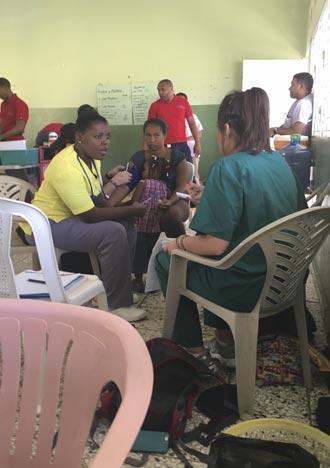
References:
1. Beaglehole R, Bonita R. What is global health? Glob Health Action. 2010;3:10.3402/gha.v3i0.5142. doi:10.3402/gha.v3i0.5142
2. Ozawa S, Shankar R, Leopold C, Orubu S. Access to medicines through health systems in low- and middle-income countries. Health Policy and Planning. 2019;34(Supplement_3):iii1-iii3. doi:10.1093/heapol/czz119
3. Slifko SE, Vielot NA, Becker-Dreps S, Pathman DE, Myers JG, Carlough M. Students with global experiences during medical school are more likely to work in settings that focus on the underserved: an observational study from a public U.S. institution. BMC Med Educ. 2021;21:552. doi:10.1186/s12909-021-02975-3
4. Bollyky TJ, Templin T, Cohen M, Dieleman JL. Lower-Income Countries That Face The Most Rapid Shift In Noncommunicable Disease Burden Are Also The Least Prepared. Health Affairs. 2017;36(11):1866-1875. doi:10.1377/hlthaff.2017.0708
5. Coates MM, Ezzati M, Aguilar GR, et al. Burden of disease among the world’s poorest billion people: An expert-informed secondary analysis of Global Burden of Disease estimates. PLOS ONE. 2021;16(8):e0253073. doi:10.1371/journal.pone.0253073
Thomas Scully is an OMS-III at UIWSOM in San Antonio, currently interested in general surgery.

Firefighters save lives every day by risking their own health through exposure to numerous carcinogens such as smoke, chemicals and UV radiation. But who helps the firefighters?
Research shows that firefighters have a 9% greater risk of getting cancer and a 14% greater risk of dying from cancer than the general population3,4. In fact, firefighting has now been deemed a Group 1 known human carcinogen by the International Agency of Research on Cancer (IARC), and cancer is now the number one cause of line of duty deaths in firefighters, with 66% of line of duty deaths from 2002-2019 attributed to cancer1,2.
To help support our local San Antonio Fire
Department (SAFD) and to raise awareness of occupational cancer in our firefighters for January’s Firefighter Cancer Awareness month, SAFD, their occupational cancer committee, the union, the training academy, and Rachelle Hamblin MD, MPH organized a Free Health Fair for their firefighters to receive free skin cancer screening exams and Esoguard esophageal cancer screening tests. Numerous medical students, residents and faculty with Christus Health Santa Rosa, University of Incarnate Word School of Osteopathic Medicine (UIWSOM), UT Health Long School of Medicine (LSOM), as well as Lucid Diagnostics and multiple community partners
stepped up to help screen and take care of more than 700 SAFD hometown heroes ranging from firefighters and paramedics to fire chiefs and arson investigators.
Of the 515 documented skin exams, approximately 250 skin lesions of concern were found, with one in two firefighters having a skin lesion of concern. Of these skin lesions of concern, numerous precancerous lesions (actinic keratoses) have since been removed with cryotherapy, as well as cancerous lesions, such as basal cell carcinoma, which have been surgically removed.
385 firefighters were successfully screened for esophageal cancer via EsoGuard. Of those,
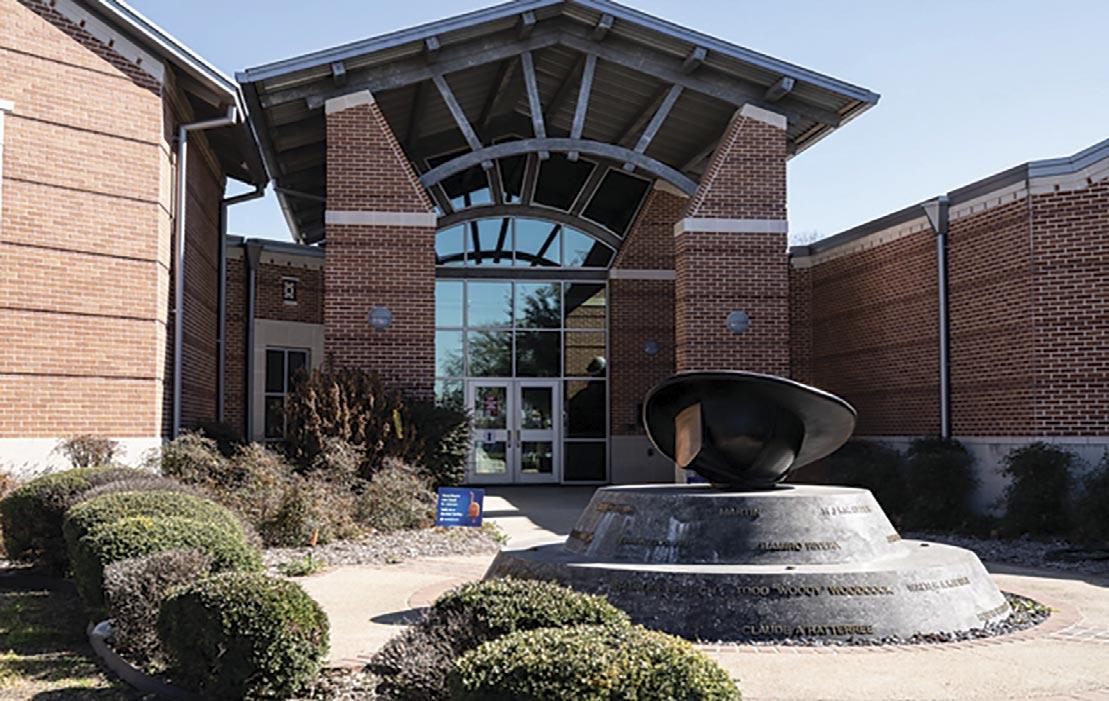
approximately 7% came back with a positive EsoGuard result indicating some sort of esophageal cell abnormality, which merited further workup with a specialist via endoscopy and biopsies. Full results of the study will be published in either April or May of 2023 with Lucid Diagnostics.
When asked about the screening event, firefighters stated in a follow-up survey that it was “Great! Quick and Easy! A must for SAFD personnel,” and “Informative.”

“It was important for me to be involved and help serve those who constantly and selflessly serve our community,” said Karen Barcenas, a third-year medical student at UIWSOM and a member of the medical student leadership team that helped plan and organize the event, adding, “My husband works as a firefighter and is constantly exposed to different chemicals daily.”
Due to the success of the health fair in January, and by popular request from the firefighters, SAFD and the medical community partners have plans to host another skin cancer and esophageal cancer screening this year and make this an annual event. They are also collaborating with fire departments around the country to implement similar screening events and raise awareness about skin and esophageal cancer prevention to #extinguish cancer.
References:

1. Demers PA, DeMarini DM, Fent KW, et al. Carcinogenicity of occupational exposure as a firefighter. Lancet Oncol. 2022;23(8):985-986. doi:10.1016/S14702045(22)00390-4
2. Morrison P. Key Note. National Firefighter Cancer Symposium. February 2020.
3. Firefighter Cancer Initiative Education and Survivorship Program. Firefighter Cancer Initiative. https://fci.brightoutcome.com/#/home. Published 2018. Accessed April 11, 2020.
4. Daniels RD, Kubale TL, Yiin JH, et al. Mortality and cancer incidence in a pooled
cohort of US firefighters from San Francisco, Chicago and Philadelphia (19502009). Occup Environ Med. 2014;71(6): 388–397. doi:10.1136/oemed-2013101662
Acknowledgements:
Rohan Banerjee (UIWSOM Class of 2025), Karen Barcenas (UIWSOM Class of 2024), Jasmine Castillejos (UIWSOM Class of 2025), Joshua Connor (UIWSOM Class of 2026), Virgil DeMario (UIWSOM Class of 2025), Rodolfo Jarero (UIWSOM Class of 2026), Chris Leba (UIWSOM Class of 2025), Daniel Nguyen (UIWSOM Class of 2025), Emily Truong (UIWSOM Class of 2025)
For more information, please contact: Fatma Zeynep Deligonul, MS (UIWSOM Class of 2026): deligonu@student.uiwtx.edu
Desiree “Dez” Ojo, MPH, MPA (UIWSOM Class of 2024): dojo@student.uiwtx.edu
Rachelle Hamblin, MD, MPH (Christus Health Santa Rosa): rachelle.hamblin@christushealth.org



Reporting of infectious diseases to public health departments has been around for many centuries, is of great public health importance, and serves as the backbone of public health. Reporting allows for the collection of data to identify disease trends, track disease outbreaks, mitigate transmission of disease, and assess intervention measures, such as vaccination. There is a list of diseases that are nationally notifiable, and each state has the responsibility to determine which diseases must be reported to the local public health department. Diseases are added to the list based on their potential public health significance (risk, duration, severity and risk of transmission to others). These are known as notifiable conditions or reportable diseases. In addition to the specified conditions listed, all category A agents (www.selectagents.gov/sat/list), any outbreak, exotic disease or unusual group expression of illness which may be of public health concern, whether or not the disease involved is listed in Texas Administrative Code §97.3, shall be reported to the local public health department. These reports are exempt from HIPAA as stated in 45 CFR 164.512, therefore patient consent is not needed to submit information to the public health department.
The Communicable Disease Prevention and Control Act (Texas Health and Safety Code, Chapter 81) authorizes the state through the Texas Department of State Health Services to determine who shall report, what, when, how and where to report (25 Texas Administrative Code §97A).
Reportable diseases are to be reported when they are suspected and/or confirmed by healthcare providers and/or laboratories to their local health department. For the City of San Antonio and Bexar County, that is the San Antonio Metropolitan Health District (Metro Health). The list of notifiable conditions and notifiable conditions reports form are updated each year and published on the Reportable Diseases website at www.sanantonio.gov/health/healthprofessionals/ reportablediseases. The list is color coded based on how quickly the disease needs to be reported. Conditions listed in black are to be reported within one week; blue are to be reported within one workday and red are to be reported immediately by placing a phone call. The list also contains appropriate phone and fax numbers for reporting and footnotes, which provides further guidance on specific conditions.
At Metro Health, disease reporting is a shared responsibility in the Communicable Disease Division (CDD) among the Tuberculosis Control & Prevention, Sexually Transmitted Infections Control & Prevention and Epidemiology Programs. CDD at Metro Health is not only focused on disease reporting, and each program can provide technical assistance to healthcare providers on specimen collection, diagnostics, medical countermeasures, infection control measures and exposure mitigation procedures. Our programs work with the community to ensure that action is taken to prevent infectious disease outbreaks in the area. One way that we ensure healthcare providers are aware of emerging infectious disease threats is through Health Alerts, found at www.sanantonio.gov/health/news/alerts, that are disseminated via e-mail lists and are published on our website.
If you are wondering how the data are used, please visit Metro Health’s Health Data & Statistics website at www.sanantonio.gov/ health/news/healthdatareports. Metro Health provides many programs and services to the community. For more information, please visit our website at www.sanantonio.gov/health.
Rita Espinoza, DrPH, MPH has been the Chief of Epidemiology for Metro Health since April 2015.


Christina Carmona, MPH, CHES, has been the Epidemiology Program Manager since October 2017.
Miguel Cervantes, MPH, has been the Public Health Administrator, Communicable Disease Division since October 2020.
Together, this team has over 40 years of experience in public health and works to combat infectious diseases.

Report all suspected cases to San Antonio Metropolitan Health District, unless noted by *

Within 1 week
Influenza-associated pediatric mortality Within 1 work day
Vibrio infection, including cholera6 Within 1 work day
Viral hemorrhagic fever (including Ebola)2
Influenza, novel Call Immediately Yellow fever
*Lead, child blood, any level & adult Yersiniosis Within 1 week blood, any level16 Call/Fax Immediately
Legionellosis
Within 1 week
STD/HIV PROGRAM, Main Line: 210-207-8830, Fax: 210-207-2116
Condition
Acquired immune deficiency syndrome (AIDS)19
When to Report
Within 1 week
Chancroid19 Within 1 week
Chlamydia trachomatis infection19
Within 1 week
Gonorrhea19 Within 1 week
Human immunodeficiency virus (HIV), acute infection19,20
Human immunodeficiency virus (HIV), non-acute Infection19,20
Syphilis – all other stages19,21
Syphilis – primary and secondary stages19,21
Within 1 work day
Within 1 week
Within 1 week
Within 1 work day
TUBERCULOSIS PROGRAM, Main Line: 210-207-8823, Fax: 210-207-8779
Tuberculosis infection22
Tuberculosis (Mycobacterium tuberculosis complex)6,23
Within 1 week
Within 1 work day
*See condition-specific footnote for reporting contact information.
To review the Texas Notifiable Conditions
Footnotes, go to:
http://www.sanantonio.gov/Health/HealthProfessionals/ReportableDiseases.
 By Travis Pearson, CEO, Ronald McDonald House Charities of San Antonio
By Travis Pearson, CEO, Ronald McDonald House Charities of San Antonio
Imagine your baby is born weeks early and weighs two pounds, or your teenager is in a catastrophic automobile wreck. Now imagine you live in Bandera, 50 miles away from the San Antonio hospitals. How do you devote all of your efforts, resources and attention to your child receiving critical medical services in San Antonio and still keep your family together?
The entire family experiences the emotional strain of a critically ill child. Finding the time and strength to track down specialists, manage the care of siblings, schoolwork, employment, travel to an unfamiliar city, and sleep in addition to being in the hospital with the child is a constant struggle for parents, siblings and other loved ones. In most cases, families are separated during treatment; whether that means one parent is in their hometown taking care of siblings or entire families are separated from their key friends and support systems.
In addition to the emotional pressure, financial stress builds quickly. Transportation back and forth, eating out and the cost of a hotel add up. A family of four staying in San Antonio for medical services will spend $5,000 a month on hotel, food and transportation expenses. If a family needs to stay for six months while their child receives chemotherapy, those expenses skyrocket to $30,000 in lodging and related expenses, not including their medical bills or expenses back home.
This is why the mission of the Ronald McDonald House Charities® of San Antonio (RMHC) is so vital to San Antonio. Our mission, “Keeping Families Close,” means keeping families close to one another, close to the best care for their child, and close to other support systems. With RMHC, no child will be in a hospital, far from home, without their parents at their side. We do this because we know and believe wholeheartedly that families are stronger when they are together.
RMHC provides a home-away-from-home for families getting essential medical services for their children. We strive to take away every stress a family may experience so that they can solely focus on the health of their child. RMHC provides housing, food, transportation, office/education centers, in-home tutoring, hygiene kits, comfort bags, laundry and an emotional support system where families can lean on each other and share their challenges, wins and even losses for the day.
The original vision of the Ronald McDonald House Charities of San Antonio is from the son of a military family. Mike's family was stationed overseas in 1977 when they learned he had Hodgkin's disease. He would fly with his mom from Germany to San Antonio on military transport planes for long treatment stays and he witnessed first-hand the difficulties of receiving medical services in a city where you had no home. Mike's goal was to find a place for families that could be a home away from home, a way to lessen the anguish and day-to-day problems his family had suffered for him while he received treatment. Even after Mike passed away, his mother, doctors, other families who had lost children to cancer, and the community joined together to keep his vision alive and broke ground on the first Ronald McDonald House in 1983. Today, we have three locations, two in the South Texas Medical Center and one inside the Children’s Hospital of San Antonio in the downtown area.
The Ronald McDonald House of San Antonio has been serving families in this area for 37 years and is one of the almost 400 Ronald McDonald Houses across the world. Each house is an independent 501(c)3 nonprofit agency with a local board of directors. San Antonio area McDonald’s Restaurants help support our house by donating a portion of their proceeds, which covers 20% of our expenses. We rely on funding the rest of our budget through donations, foundations and fundraisers.
In a typical year, RMHC provides 12,000 nights of care serving 500 children 0-21 years of age, and their families, saving them $2,000,000 in hotel, food and transportation costs. Including family members, our annual impact is 2,000 people. There is no limit on how long a family can stay with us. The average length of stay is 20 days and the longest a family has ever stayed is 2.5 years. Families receive services without regard to race, national origin, religious beliefs, economic status, gender, income or any other demographic markers.
The top diagnoses of the children we serve are childhood cancer, babies born prematurely, accidents, organ or tissue transplants and heart conditions. While these are the most common medical conditions, children are eligible for all inpatient, outpatient, mental and behavioral health services.
Our homes provide families with a fully stocked kitchen and community pantry so they can have the freedom and ability to cook nutritious meals. Without RMHC, families staying in hotels, or even their cars would have to resort to unhealthy and costly fast food as their primary source of meals. RMHC knows how important it is for new parents to be able to be by their newborn baby’s side at a moment’s notice and to have access to healthy foods, especially in a time of being ill or injured.
The Saldana family from Laredo, Texas, know how important the Ronald McDonald House is. When JJ was diagnosed with leukemia, his Aunt Sara said, “We found ourselves overwhelmed by the unexpected news and not knowing how we were going to manage his stay in San Antonio.” When Sara and JJ arrived in San Antonio, they were welcomed with open arms by the Ronald McDonald House. “The House not only gave us the peace of mind of having a roof over our heads but also gave us a sense of safety by learning that we were not alone,” Sara said.
Three years after his stay JJ’s cancer came back. The Saldana Family once again found themselves in need of a comfortable and affordable place to stay near JJ’s treatment. And once again, the Ronald McDonald House of San Antonio was there to help.

Families like the Saldanas rely on RMHC when they least expect it. Ronald McDonald House of San Antonio is based on the simple idea that nothing else should matter when a family is focused on the health of their child; not where they can afford to stay or where they will get their next meal. For families with crucially ill children, home is where your children are, and Ronald McDonald House of San Antonio provides that home away from home.
To learn more or make a donation, please visit www.rmhcsanantonio.org or contact our Marketing Director, Jennifer Othman, at 210580-9010. Thank you for supporting our mission to keep families close when they need it most.
Travis Pearson is an experienced CEO and LPC who brings 25 years’ experience in the For-Profit, Nonprofit and Social Enterprise sectors in areas such as disaster services, military PTS, homelessness, mental illness, trauma, adoptions, foster care and child abuse. He has been appointed and served on numerous Boards at the city and state levels focusing on family services, child welfare, veteran issues and homelessness.

The ‘First Tuesdays at the Capitol’ program continued for the third ‘First Tuesdays’ visit on April 4, 2023. BCMS physicians, residents, medical students and Alliance members discussed a growing list of topics of importance to medicine with all 14 of our legislators or their lead staff. Some of the hot topics discussed were ensuring there are enough Graduate Medical Education (GME) spots for Texas medical school residents to stay in Texas, the scope of practice and the importance of the physician leading the medical teams, extending postpartum care from the current three months to 12 months for Medicaid recipients, maintaining the requirements for childhood vaccinations, etc.
I had the pleasure of attending this ‘First Tuesdays’ visit in place of Mary Nava, BCMS Chief Government Affairs Officer, who could not attend due to illness. Many thanks to the attendees who made our visits a success: Darrell Baskin, MD, Gabriel Bietz, MD, Daniel Deane, MD, Pamela Hall, MD, Sanjiv Kumar, MD, Amita Kumar, MD, Lubna
Naeem, MD, Alicia Parker, MD, Patrick Ramsey, MD, MSPH, Jayesh Shah, MD, Ezequiel “Zeke” Silva, MD; Alliance members Jenny Shepherd and Martha Vijjeswarapu, and medical students and residents representing the UT Health Long School of Medicine: John Wilson, MD, Madhumitha Gautham, John Hoverson, Karen Liu, Jonathan Mathews, Manasa Muppirala, Leslie Omeire, Lynnlee Poe, Shwetha Prabakar, Abram Qiu, Arman Satari, Terrence Stilson, Shriya Veluri, and the UIW School of Osteopathic Medicine: Meagan Khan, Denise Nemeth, Sarah Suhood, Ray Xyruz Villariz.

To read more about the topics discussed with the legislators, go to texmed.org/advocacy and click on Key Issues. For local discussion on these and other legislative advocacy topics, consider joining the BCMS Legislative and Socioeconomics Committee by contacting Mary Nava at mary.nava@bcms.org.

On
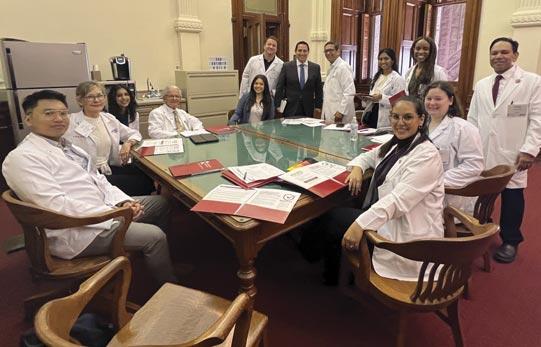



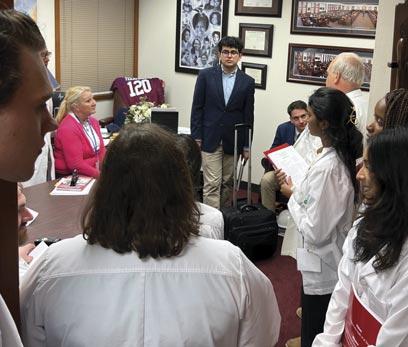


The Bexar County Medical Society celebrated Doctors’ Day 2023 in Fredericksburg, Texas. On Saturday, March 25, a group of 50 doctors, friends and family visited Becker Vineyards where Dr. Richard Becker personally guided guests on a private tour of the winery, followed by a wine tasting and lunch.

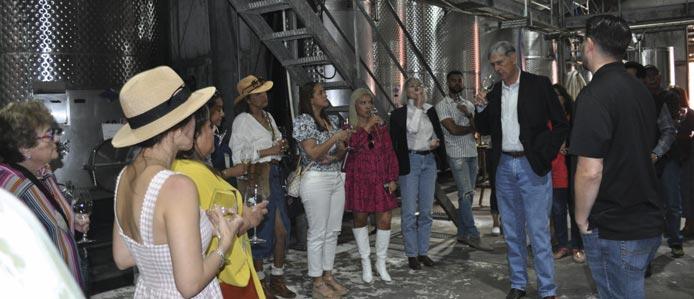

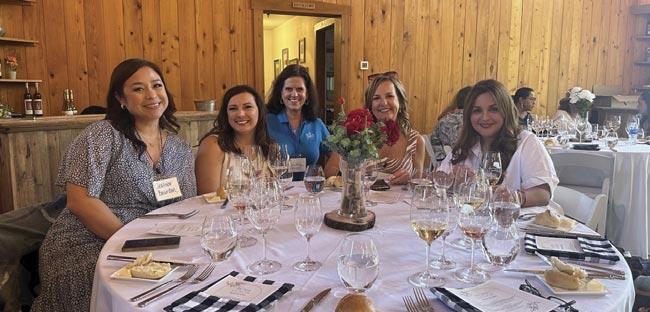


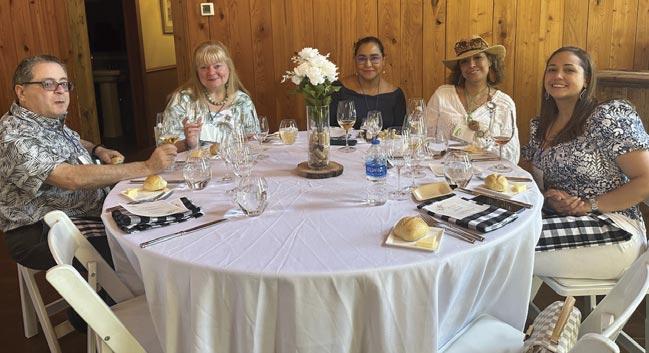
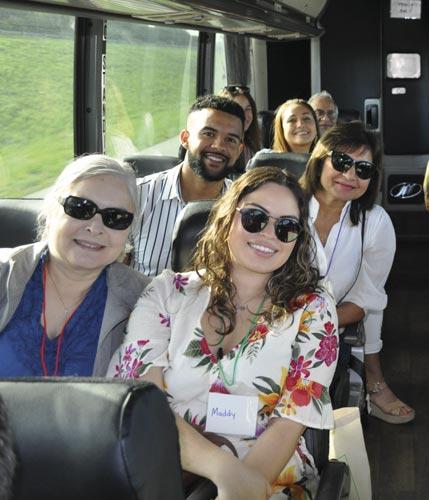
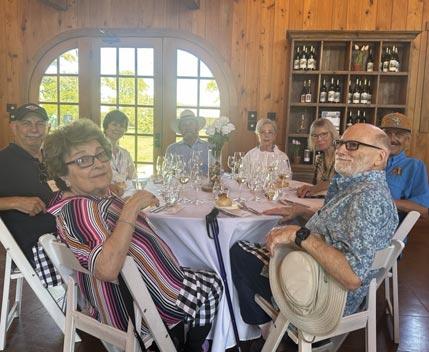

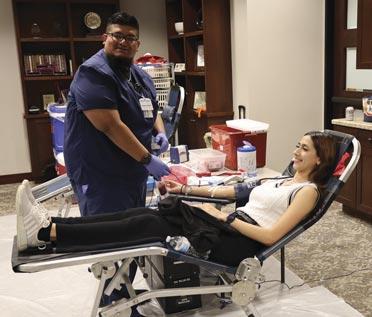
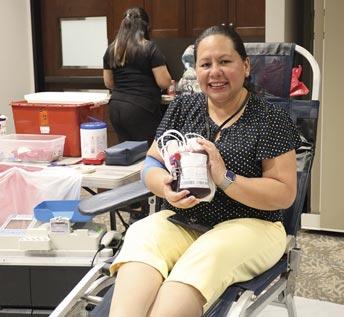
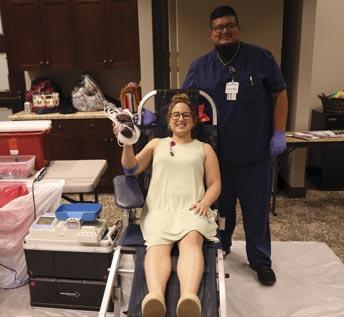
Thank you to all of our Blood Donor Heroes! Together with BCMS, we gave 15 bags of whole blood. Because of you, we beat our record from last year. Congratulations to our first-time blood donors, we are so proud of you!


Bexar County Medical Society and TMA Insurance Trust representatives met with University of Incarnate Word Medical School leaders to talk about the education and benefit opportunities available to the medical residents at UIW.
From left to right: Brenda Trevino, UIW Director, Graduate Medical Education; Wendell England, TMAIT Director of Member Benefits; Brissa G. Vela, BCMS Membership Director; Melody Newsom, BCMS CEO and Executive Director; Dr. John Nava, BCMS President; Guy Patterson, TMAIT Executive Director; Dr. John Pham, UIW Dean and Chief Academic Officer


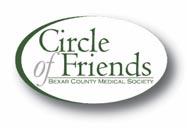
We encourage you to use our supporting vendors whenever you or your practice needs supplies or services.
Sol Schwartz & Associates P.C. (HHH Gold Sponsor)
Sol Schwartz & Associates is the premier accounting firm for San Antonio-area medical practices and specializes in helping physicians and their management teams maximize their financial effectiveness.
Jim Rice, CPA 210-384-8000, ext. 112 jprice@ssacpa.com www.ssacpa.com
“Dedicated to working with physicians and physician groups.”
ASSET WEALTH MANAGEMENT
Aspect Wealth Management (★★★ Gold Sponsor)

We believe wealth is more than money, which is why we improve and simplify the lives of our clients, granting them greater satisfaction, confidence and freedom to achieve more in life.
Michael Clark, President
210-268-1520
mclark@aspectwealth.com
www.aspectwealth.com
“Get what you deserve … maximize your Social Security benefit!”
BANKING
Express Information Systems (HHH Gold Sponsor)

With over 29 years’ experience, we understand that real-time visibility into your financial data is critical. Our browser-based healthcare accounting solutions provide accurate, multi-dimensional reporting that helps you accommodate further growth and drive your practice forward.
Rana Camargo
Senior Account Manager
210-771-7903
ranac@expressinfo.com www.expressinfo.com
“Leaders in Healthcare Software & Consulting”
Kreager Mitchell (HHH Gold Sponsor)
At Kreager Mitchell, our healthcare practice works with physicians to offer the best representation possible in providing industry specific solutions. From business transactions to physician contracts, our team can help you in making the right decision for your practice.
Michael L. Kreager
210-283-6227
mkreager@kreagermitchell.com
Bruce M. Mitchell
210-283-6228
bmitchell@kreagermitchell.com www.kreagermitchell.com
“Client-centered legal counsel with integrity and inspired solutions”
Broadway Bank (HHH Gold Sponsor)

Healthcare banking experts with a private banking team committed to supporting the medical community.
Thomas M. Duran
SVP, Private Banking Team Lead
210-283-6640
TDuran@Broadway.Bank
www.broadwaybank.com
“We’re here for good.”
Synergy FCU Member Services
210-750-8333 info@synergyfcu.org
www.synergyfcu.org
“Once a member, always a member. Join today!”
CLINICAL DIAGNOSTICS
Livingston Med Lab (HHHH 10K Platinum Sponsor)

High Complexity Clia/Cola accredited Laboratory providing White Glove Customer Service. We offer a Full Diagnostic Test Menu in the fields of Hematology, Chemistry, Endocrinology, Toxicology, Infectious Disease & Genetics. Robert Castaneda (CEO) 210-316-1792
Robert@livingstonmedlab.com
Joey Martinez (Director of Operations) 210-204-7072
Joey@livingstonmedlab.com
Dwight Chapman (Account Manager) 210-591-2649
Dwight@livingstonmedlab.com
www.livingstonmedlab.com/home
“Trusted Innovative, Accurate, and STAT Medical Diagnostics”
Bexar Credentials Verification, Inc. (HHHH 10K Platinum Sponsor)
Bexar Credentials Verification Inc. provides primary source verification of credentials data that meets The Joint Commission (TJC) and the National Committee for Quality Assurance (NCQA) standards for health care entities.

Betty Fernandez
Director of Operations
210-582-6355
Betty.Fernandez@bexarcv.com
www.BexarCV.com
“Proudly serving the medical community since 1998”
Oakwell Private Wealth Management (HHHH 10K Platinum Sponsor) Oakwell Private Wealth Management is an independent financial advisory firm with a proven track record of providing tailored financial planning and wealth management services to those within the medical community.
Brian T. Boswell, CFP®, QKA Senior Private Wealth Advisor
Genics Laboratories (HHH Gold Sponsor)

512-649-8113
The Bank of San Antonio (HHH Gold Sponsor)

We specialize in insurance and banking products for physician groups and individual physicians. Our local insurance professionals are some of the few agents in the state who specialize in medical malpractice and all lines of insurance for the medical community.
Brandi Vitier
210-807-5581
brandi.vitier@thebankofsa.com
www.thebankofsa.com
Synergy Federal Credit Union (HH Silver Sponsor)
Looking for low loan rates for mortgages and vehicles? We've got them for you. We provide a full suite of digital and traditional financial products, designed to help Physicians get the banking services they need.
Genics Laboratories offers accurate, comprehensive and reliable results to our partners and patients. Genics Laboratories is committed to continuous research, ensuring our protocols are always at the peak of current technology.
Yulia Leontieva
Managing Partner, Physician Liaison
(210) 503-0003
yulia@genicslabs.com
Kevin Setanyan
Managing Partner
(210) 503-0003
kevin@genicslabs.com
Artyom Vardapetyan
Managing Partner
(210) 503-0003
www.genicslabs.com
“Accurate results in record time.”
SERVICE@OAKWELLPWM.COM
www.oakwellpwm.com
“More Than Just Your Advisor, We're Your Wealth Management Partner”
Elizabeth Olney with Edward Jones (HH Silver Sponsor)
We learn your individual needs so we can develop a strategy to help you achieve your financial goals. Join the nearly 7 million investors who know. Contact me to develop an investment strategy that makes sense for you.
Elizabeth Olney, Financial Advisor
210-858-5880
Elizabeth.olney@edwardjones.com
www.edwardjones.com/elizabeth-olney
"Making Sense of Investing"
Aspect Wealth Management (HHH Gold Sponsor)

We believe wealth is more than money, which is why we improve and simplify the lives of our clients, granting them greater satisfaction, confidence and freedom to achieve more in life.
Michael Clark, President
210-268-1520
mclark@aspectwealth.com www.aspectwealth.com
“Get what you deserve … maximize your Social Security benefit!”
Nexus Neurorecovery Center (HHH Gold Sponsor)

A post-acute rehabilitation facility focusing on brain injuries. Programming provides individual and group physical, occupational, cognitive and speech therapy. We help residents return to lives of productivity and meaning.
Sydney Kerr Liaison 346-339-2654 skerr@nhsltd.com
Caitlyn Tewksbury ctewksbury@nhsltd.com
Justin Sanderson CEO 210-854-4732 jsanderson@nhsltd.com
Nexus Neurorecovery Center 227 Lewis St, San Antonio, TX 78212
sional reporting that helps you accommodate further growth and drive your practice forward.
Rana Camargo
Senior Account Manager
210-771-7903
ranac@expressinfo.com
www.expressinfo.com
“Leaders in Healthcare Software & Consulting”
INSURANCE
TMA Insurance Trust (HHHH 10K Platinum Sponsor)
TMA Insurance Trust is a full-service insurance agency offering a full line of products – some with exclusive member discounts and staffed by professional advisors with years of experience. Call today for a complimentary insurance review. It will be our privilege to serve you.

The Bank of San Antonio Insurance Group, Inc. (HHH Gold Sponsor)

We specialize in insurance and banking products for physician groups and individual physicians. Our local insurance professionals are some of the few agents in the state who specialize in medical malpractice and all lines of insurance for the medical community.
Katy Brooks, CIC 210-807-5593
katy.brooks@bosainsurance.com
www.thebankofsa.com
“Serving the medical community.”
MedPro Group (HH Silver Sponsor)
Conviva Care Center (HHH Gold Sponsor)

Conviva’s value-based care model allows physicians to deliver high quality, personalized care and achieve better outcomes, while feeling free to focus on health equity and patient outcomes.
Kim Gary Senior Physician Recruiter
(812) 272-9838
KGary4@humana.com
www.ConvivaCareers.com
“Fuel Your Passion & Find Your Purpose”
Amegy Bank of Texas (HH Silver Sponsor)
We believe that any great relationship starts with five core values: Attention, Accountability, Appreciation, Adaptability and Attainability. We work hard and together with our clients to accomplish great things.
Jeanne Bennett
EVP | Private Banking Manager
210-343-4556
Jeanne.bennett@amegybank.com
Karen Leckie
Senior Vice President | Private Banking
210-343-4558
karen.leckie@amegybank.com
Robert Lindley
Senior Vice President | Private Banking
210-343-4526
robert.lindley@amegybank.com
Denise C. Smith
Vice President | Private Banking
210-343-4502
Denise.C.Smith@amegybank.com
www.amegybank.com
“Community banking partnership”
https://nexushealthsystems.com
“To return patients to lives of productivity and meaning”
Wendell England Director of Member Benefits
512-370-1776
wendell.england@tmait.org
800-880-8181
www.tmait.org
“We offer BCMS members a free insurance portfolio review.”
Rated A++ by A.M. Best, MedPro Group has been offering customized insurance, claims and risk solutions to the healthcare community since 1899. Visit MedPro to learn more. Kirsten Baze 512-658-0262
Kirsten.Baze@medpro.com
www.medpro.com
UT Health San Antonio MD Anderson Cancer Center (HHH Gold Sponsor)

UT Health provides our region with the most comprehensive care through expert, compassionate providers treating patients in more than 140 medical specialties at locations throughout San Antonio and the Hill Country.
Regina Delgado
Business Development Manager (210) 450-3713
delgador4@uthscsa.edu
UT Health San Antonio MD
Anderson Mays Cancer Center
Laura Kouba
Business Development Manager (210) 265-7662
norriskouba@uthscsa.edu
https://uthscsa.edu/
Appointments: 210-450-1000
UT Health San Antonio
7979 Wurzbach Road San Antonio, TX 78229
INFORMATION AND TECHNOLOGIES
Express Information Systems

(HHH Gold Sponsor)
With over 29 years’ experience, we understand that real-time visibility into your financial data is critical. Our browser-based healthcare accounting solutions provide accurate, multi-dimen-
Humana (HHH Gold Sponsor)
Humana is a leading health and well-being company focused on making it easy for people to achieve their best health with clinical excellence through coordinated care.
Jon Buss: 512-338-6167
Jbuss1@humana.com
Shamayne Kotfas: 512-338-6103
skotfas@humana.com
www.humana.com
INSURANCE/MEDICAL MALPRACTICE
Texas Medical Liability Trust (HHHH 10K Platinum Sponsor)

With more than 20,000 healthcare professionals in its care, Texas Medical Liability Trust (TMLT) provides malpractice insurance and related products to physicians. Our purpose is to make a positive impact on the quality of healthcare for patients by educating, protecting, and defending physicians.
Patty Spann
512-425-5932
patty-spann@tmlt.org
www.tmlt.org
Recommended partner of the Bexar County Medical Society
Alamo Capital Advisors LLC

(★★★★ 10K Platinum Sponsor)
Focused on sourcing, capitalizing and executing investment and development opportunities for our investment partners and providing thoughtful solutions to our advisory clients. Current projects include new developments, acquisitions and sales, lease representation and financial restructuring (equity, debt and partnership updates).
Jon Wiegand, Principal 210-241-2036
jw@alamocapitaladvisors.com
www.alamocapitaladvisors.com
Wave Online (★★★ Gold Sponsor)

Our team of professionals will act as your extended AR office enhancing your revenue through our proprietary metrics and claim management systems. In addition, you keep 100% control of your RCM. Contact us today for a no cost evaluation.
Saranraj (Raj) Venkatesh
Vice President – RCM | Sales and Client Relations
726-228-1097
Visit us at www.bcms.org
saranraj@wavemt.com
https://rcmwave.com/ “Innovation towards Solutions”
Commercial & Medical Credit Services
(HH Silver Sponsor)
A bonded and fully insured San Antonio-based collection agency.
Henry Miranda 210-340-9515
hcmiranda@sbcglobal.net www.cmcs-sa.com
“Make us the solution for your account receivables.”
Henry Schein Medical (HH Silver Sponsor)

From alcohol pads and bandages to EKGs and ultrasounds, we are the largest worldwide distributor of medical supplies, equipment, vaccines and pharmaceuticals serving office-based practitioners in 20 countries. Recognized as one of the world’s most ethical companies by Ethisphere.
Tom Rosol 210-413-8079
tom.rosol@henryschein.com www.henryschein.com
“BCMS members receive GPO discounts of 15 to 50 percent.”
San Antonio Army Medical Recruiting office
(★★Silver Sponsor)
Mission: Recruit highly qualified and motivated healthcare professionals for service in the Army Reserves or Active Duty Army, in support of Soldiers and their families.
1LT Thomas Alexandria 210-328-9022
Alexandria.n.thomas12.mil@army. mil https://recruiting.army.mil/mrb/ “Service to Country, Army Medicine, Experientia et Progressus”
iGenomeDx

( Gold Sponsor)
Most trusted molecular testing laboratory in San Antonio providing FAST, ACCURATE and COMPREHENSIVE precision diagnostics for Genetics and Infectious Diseases.
Dr. Niti Vanee Co-founder & CEO 210-257-6973
nvanee@iGenomeDx.com
Dr. Pramod Mishra Co-founder, COO & CSO
210-381-3829
pmishra@iGenomeDx.com www.iGenomeDx.com
“My DNA My Medicine, Pharmacogenomics”
Wave Online (★★★ Gold Sponsor)

Our team of professionals will act as your extended AR office enhancing your revenue through our proprietary metrics and claim management systems. In addition, you keep 100% control of your RCM. Contact us today for a no cost evaluation.
Saranraj (Raj) Venkatesh
Vice President – RCM | Sales and Client Relations
726-228-1097
saranraj@wavemt.com https://rcmwave.com/ “Innovation towards Solutions”
The Health Cell (HH Silver Sponsor)
“Our Focus is People” Our mission is to support the people who propel the healthcare and bioscience industry in San Antonio. Industry, academia, military, nonprofit, R&D, healthcare delivery, professional services and more!
Kevin Barber, President 210-308-7907 (Direct) kbarber@bdo.com
Valerie Rogler, Program Coordinator 210-904-5404
Valerie@thehealthcell.org www.thehealthcell.org
“Where San Antonio’s Healthcare Leaders Meet”
San Antonio Medical Group Management Association (SAMGMA) (HH Silver Sponsor)
SAMGMA is a professional nonprofit association with a mission to provide educational programs and networking opportunities to medical practice managers and support charitable fundraising.
Lindsey Herman Nolan, MHR, CMPE, President info4@samgma.org
www.samgma.org
continued from page 41
Alamo Capital Advisors LLC

(
★★★★ 10K Platinum Sponsor)
Focused on sourcing, capitalizing and executing investment and development opportunities for our investment partners and providing thoughtful solutions to our advisory clients. Current projects include new developments, acquisitions and sales, lease representation and financial restructuring (equity, debt and partnership updates).
Jon Wiegand, Principal 210-241-2036 jw@alamocapitaladvisors.com www.alamocapitaladvisors.com
Oakwell Private Wealth Management (HHHH 10K Platinum Sponsor)
Oakwell Private Wealth Management is an independent financial advisory firm with a proven track record of providing tailored financial planning and wealth management services to those within the medical community.
Brian T. Boswell, CFP®, QKA Senior Private Wealth Advisor 512-649-8113
SERVICE@OAKWELLPWM.COM
www.oakwellpwm.com
“More Than Just Your Advisor, We're Your Wealth Management Partner”
Favorite Healthcare Staffing (HHHH 10K Platinum Sponsor)
Serving the Texas healthcare community since 1981, Favorite Healthcare Staffing is proud to be the exclusive provider of staffing services for the BCMS. In addition to traditional staffing solutions, Favorite offers a comprehensive range of staffing services to help members improve cost control, increase efficiency and protect their revenue cycle.
Cindy M. Vidrine
Director of Operations- Texas 210-918-8737
cvidrine@favoritestaffing.com
“Favorite Healthcare Staffing offers preferred pricing for BCMS members.”
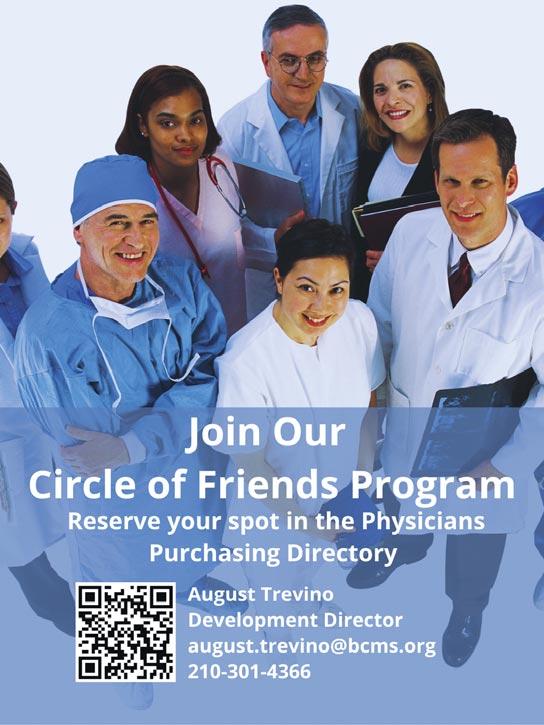







Thirty-four years ago, Lexus was created out of thin air by Toyota as their luxury arm, and they, as Top Gear presenter Chris Harris memorably put it, “kaboomed the entire U.S. prestige car industry” with their brilliant first-generation LS 400 sedan.

The 2023 LS 500 represents the fifth generation of the Lexus LS, and boy have things changed since 1989. Most notably, full-size luxury sedans have gone from “the” automotive status symbol to, “why did you get that instead of a big SUV or luxury electric car?”
That’s too bad because the Lexus LS 500 is an excellent luxury sedan that exudes elegance and sophistication.
OK, maybe not from its exterior design, which is a little overdone. The front end features a massive grille that sets the tone for the rest of the vehicle, which, thanks to many design elements here, there and everywhere, can best be described as busy. Is it ugly? No, but neither is it understated.
Under the hood, the LS 500 is powered by a twin-turbo 3.4-liter V6 engine that produces 416 horsepower and 442 lb-ft of torque. This engine is paired with a 10-speed automatic transmission that provides smooth and seamless shifts. The LS 500 can accelerate from 0 to 60 mph in just 4.6 seconds, which is impressive for a vehicle of its size and weight.
Fuel economy for the LS 500, rated at just 19 MPG City and 30 MPG Highway, is uninspiring.
For the record, hybrid LS 500h models couple a twin-turbo 3.5-liter V6 with a hybrid system and continuously variable transmission that decreases horsepower to 354 but juices fuel economy to 25 MPG City/33 MPG Highway. Naturally, hybrid and AWD versions of the LS sedan add weight and complexity to what is already a nice full-size luxury sedan, which is just fine on its own.
The LS 500's price tag is steep, as you’d expect for a top-of-the-line luxury car, with the base model starting at around $78,000 and fully loaded models going for well over $100,000. Hashtag life in 2023.
The interior of the LS 500 is where the car shines. The cabin is spacious and luxurious, with high-quality materials used throughout. The seats are comfortable and supportive, as LS seats have always been, and there's plenty of room for front and rear passengers to stretch out. But the main plus of the LS’s interior is that it’s as nice as what you’ll find in any S-class, A8 or 7-series but with a different vibe. Thank you, Lexus (and Genesis), for bringing a different sensibility to luxury vehicle interiors.
The dashboard is dominated by a big 12.3-inch touchscreen display that's easy to use and provides access to a wide range of features and functions. Lexus’ new infotainment system is intuitive, responsive and compatible with both Apple CarPlay and Android Auto.
And kudos to Lexus for moving on from your didn’t-age-well-atall Remote Touch system. The new touchscreen user interface is a big step forward.
Another welcome new tech feature of the LS 500 is its semi-autonomous driving system, which Lexus calls, "Lexus Safety System+." This feature integrates adaptive cruise control, lane departure assist and automatic emergency braking to give you some self-driving relief from having to deal directly with bumper-to-bumper commuting.
The LS 500 also has a 360-degree camera system that provides a bird's-eye view of the vehicle, making it easy to park and maneuver in tight spaces. This feature is not new to Lexus (or the automotive industry) but is very helpful.
The ride quality of the LS 500 is smooth and comfortable, as you’d expect with any Lexus, with the suspension doing an excellent job of absorbing bumps and rough road surfaces. The handling is also impressive, with the car feeling agile and responsive in corners. Obviously, this is not a sports car or even a sports sedan, but it’s still good. I’d call it very Lexus LS, which is a compliment.
As I’ve noted in previous articles, after a busy day at work operating, cathing, scoping or seeing an endless procession of patients with neverending complaints that you’re supposed to fix, like, right now, it’s good to drive home in a vehicle that cossets and relaxes you. The Lexus LS is that kind of car.
Overall, the Lexus LS 500 is an excellent luxury sedan that offers a comfortable and luxurious driving experience. It’s not an SUV like a Range Rover or even a Lexus LX 600, but its powerful engine, smooth ride and high-tech features make it a top contender in its class. If you're in the market for a luxury sedan rather than SUV and can afford the LS 500, it's worth considering over its German competitors.
As always, call Phil Hornbeak, the Auto Program Manager at BCMS (210-301-4367) for your best deal on any new car or truck brand. Phil can also connect you to preferred financing and lease rates.
Stephen Schutz, MD, is a board-certified gastroenterologist who lived in San Antonio in the 1990s when he was stationed here in the U.S. Air Force. He has been writing auto reviews for San Antonio Medicine magazine since 1995.

11911 IH 10 West San Antonio, TX 78230
Coby Allen 210-696-2232
Audi Dominion 21105 West IH 10 San Antonio, TX 78257
Rick Cavender 210-681-3399

Northside Chevrolet 9400 San Pedro Ave. San Antonio, TX 78216
Charles Williams 210-912-5087
Chuck Nash Chevrolet Buick GMC 3209 North Interstate 35 San Marcos, TX
William Boyd 210-859-2719
Bluebonnet Chrysler Dodge Ram 547 S. Seguin Ave. New Braunfels, TX 78130
Matthew C. Fraser 830-606-3463
Kahlig Auto Group
Northside Ford 12300 San Pedro San Antonio, TX
Marty Martinez 210-477-3472
Kahlig Auto Group
Northside Honda 9100 San Pedro Ave. San Antonio, TX 78216
Paul Hopkins 210-988-9644
Kahlig Auto Group
14610 IH 10 West San Marcos, TX 78249
Mark Hennigan 832-428-9507
Land Rover San Antonio 13660 IH 10 West San Antonio, TX
Cameron Tang 210-561-4900
North Park Lexus 611 Lockhill Selma San Antonio, TX
Tripp Bridges 210-308-8900
North Park Lexus at Dominion 25131 IH 10 W Dominion San Antonio, TX
James Cole 210-816-6000
North Park Lincoln 9207 San Pedro San Antonio, TX
Sandy Small 210-341-8841
North Park Mazda 9333 San Pedro San Antonio, TX 78216
Mercedes Benz of Boerne 31445 IH 10 West Boerne, TX
Mercedes Benz of San Antonio 9600 San Pedro San Antonio, TX
John Kahlig 210-253-3300
James Godkin 830-981-6000
Al Cavazos Jr. 210-366-9600 9455 IH 10 West San Antonio, TX 78230
Douglas Cox 210-764-6945
Kahlig Auto Group
Audi North Park 15670 IH-35 North Selma, TX 78254
Camden Steele 325-374-9897
North Park Subaru 9807 San Pedro San Antonio, TX 78216
Raymond Rangel 210-308-0200
North Park Subaru at Dominion 21415 IH 10 West San Antonio, TX 78257
Phil Larson 877-356-0476
Cavender Toyota 5730 NW Loop 410 San Antonio, TX
Gary Holdgraf 210-862-9769
North Park Toyota 10703 Southwest Loop 410 San Antonio, TX 78211
Justin Boone 210-635-5000
 Kahlig Auto Group
Kahlig Auto Group
Kahlig Auto Group
Kahlig Auto Group
Kahlig Auto Group
Kahlig Auto Group
Kahlig Auto Group
Kahlig Auto Group

